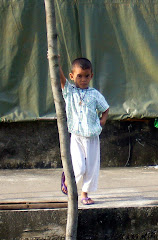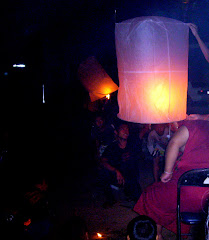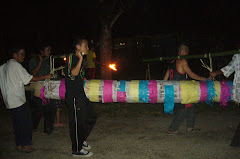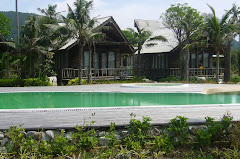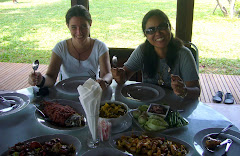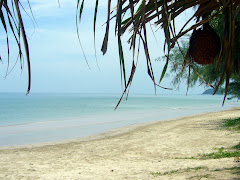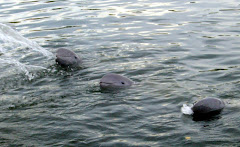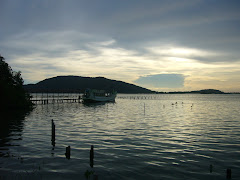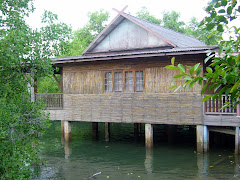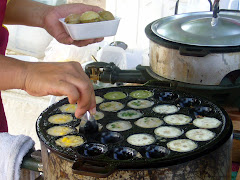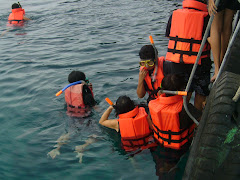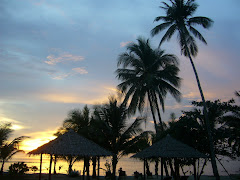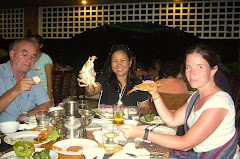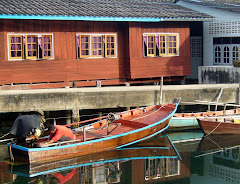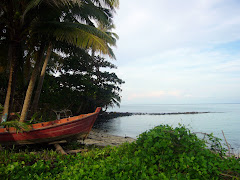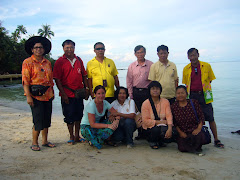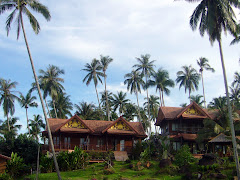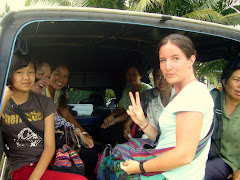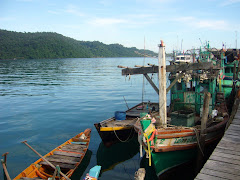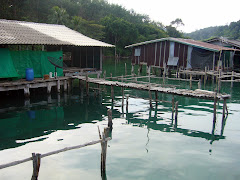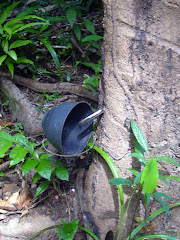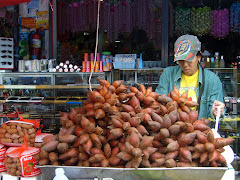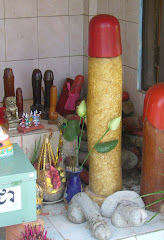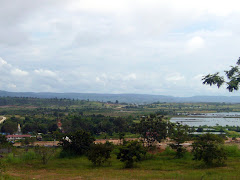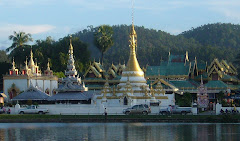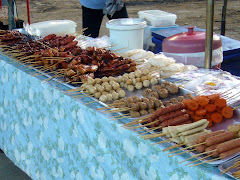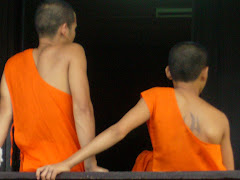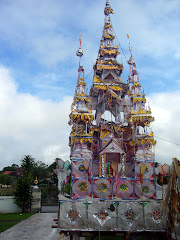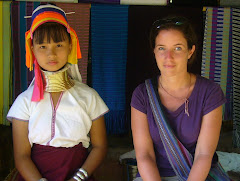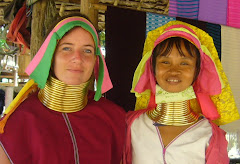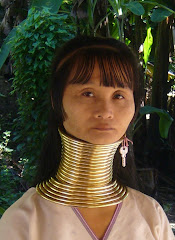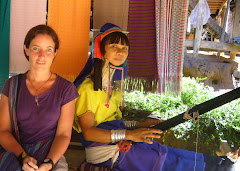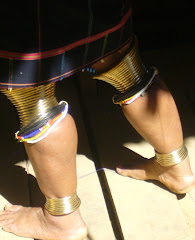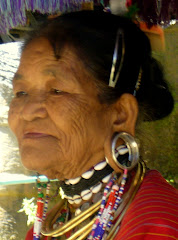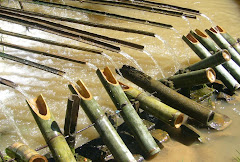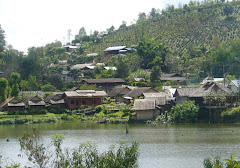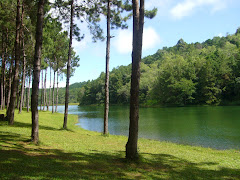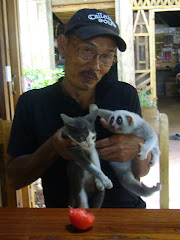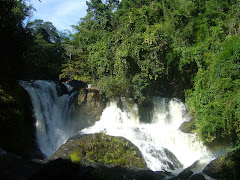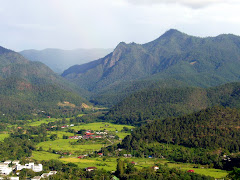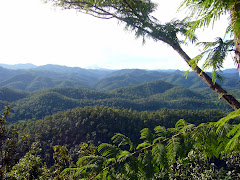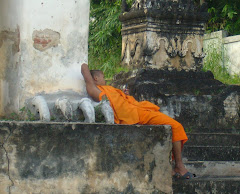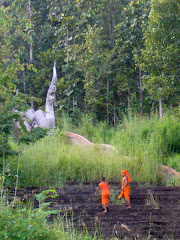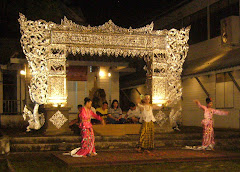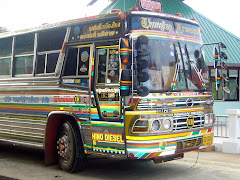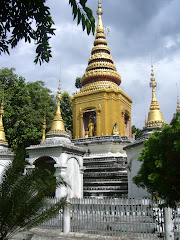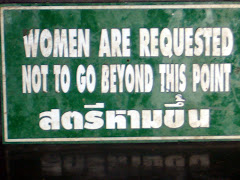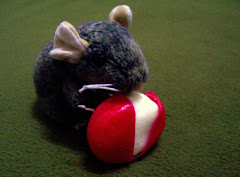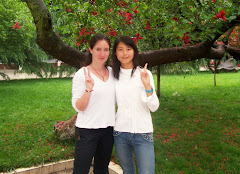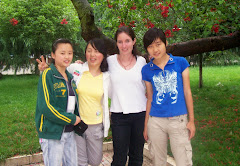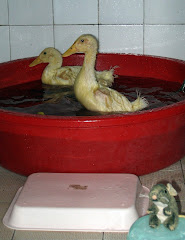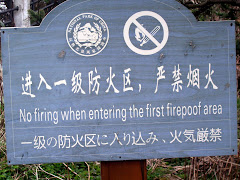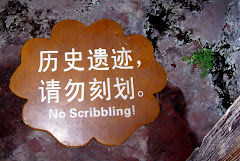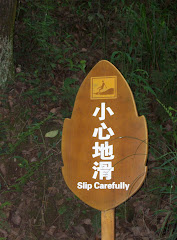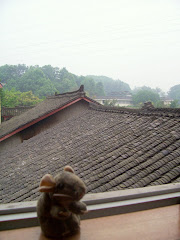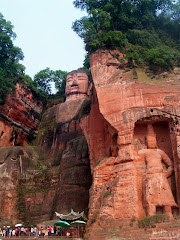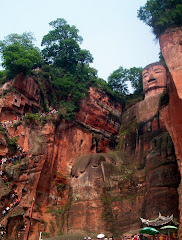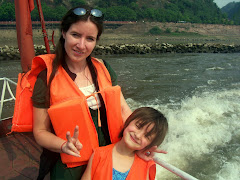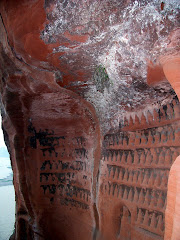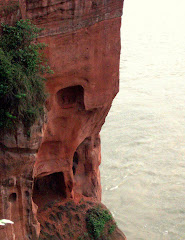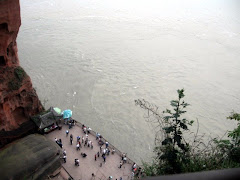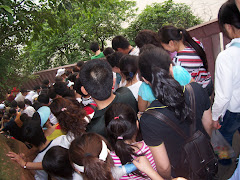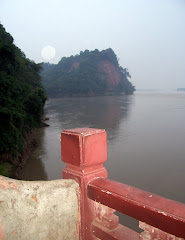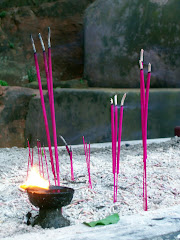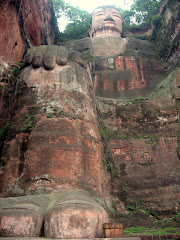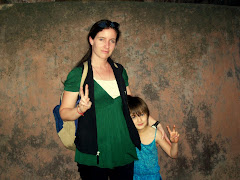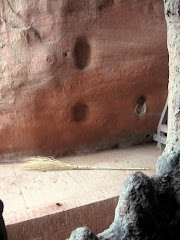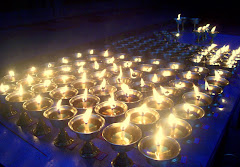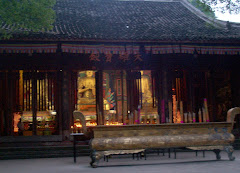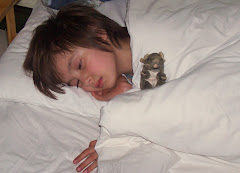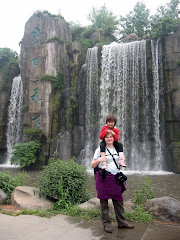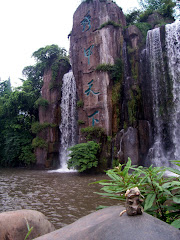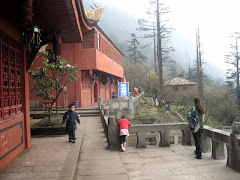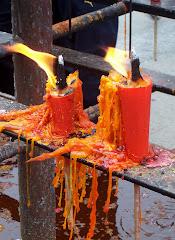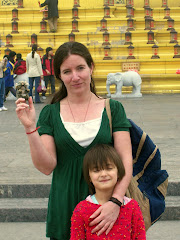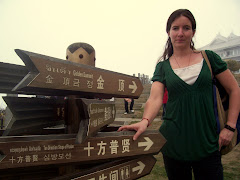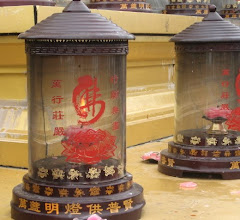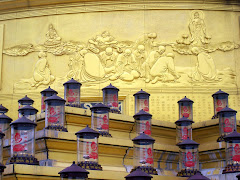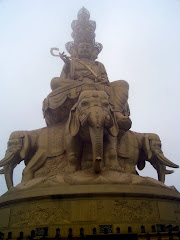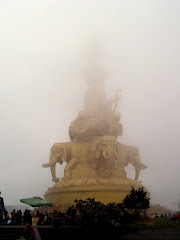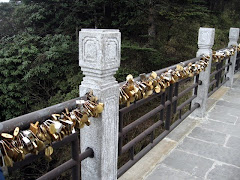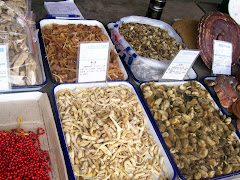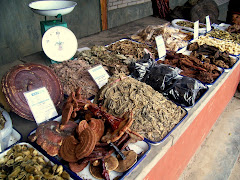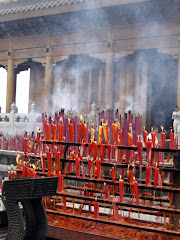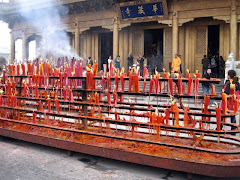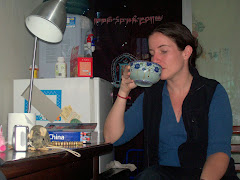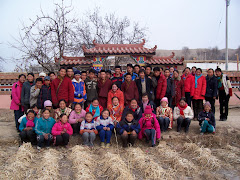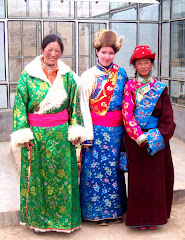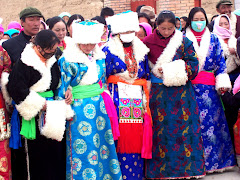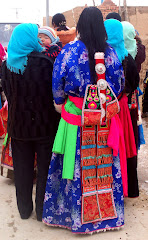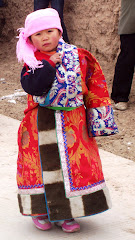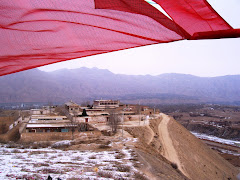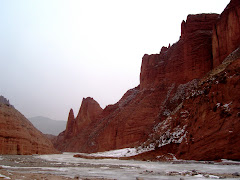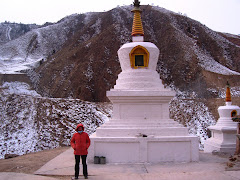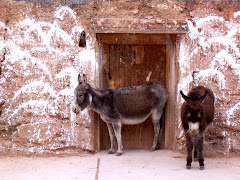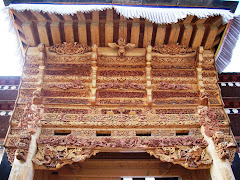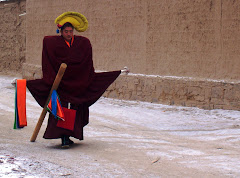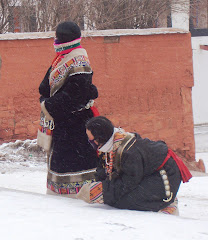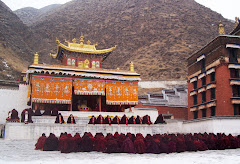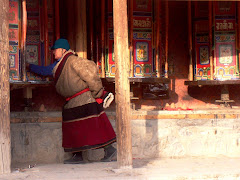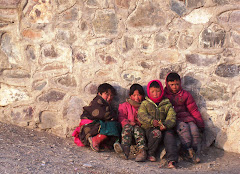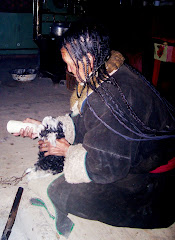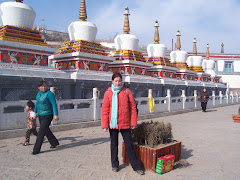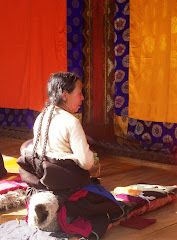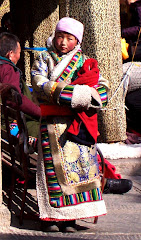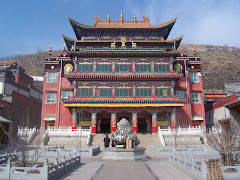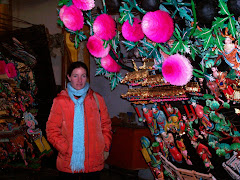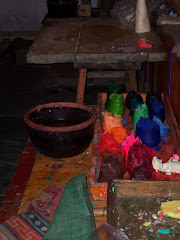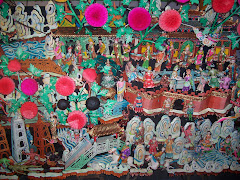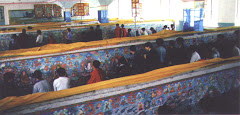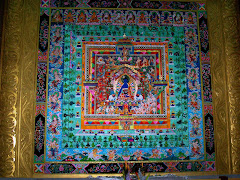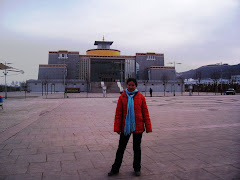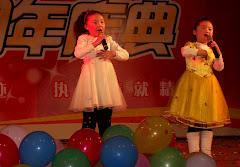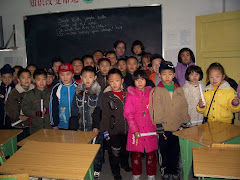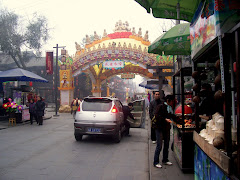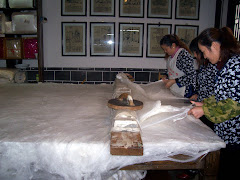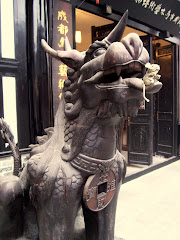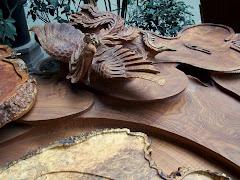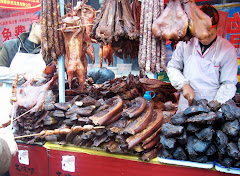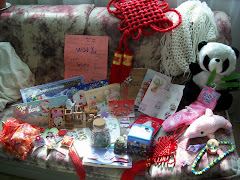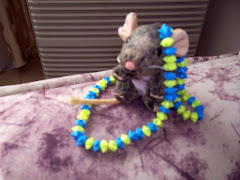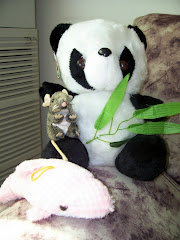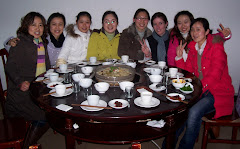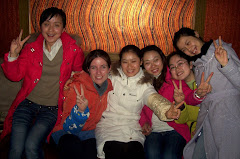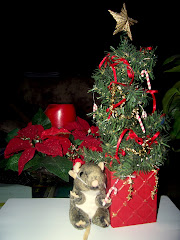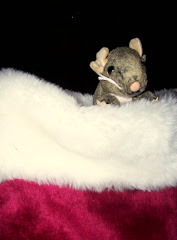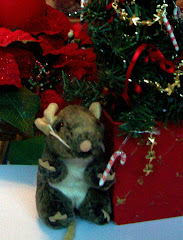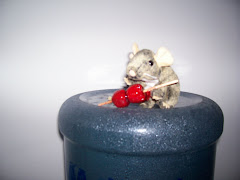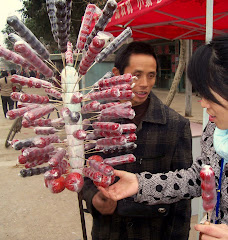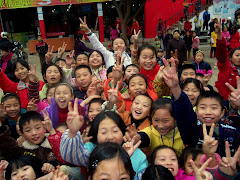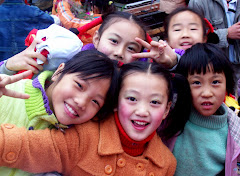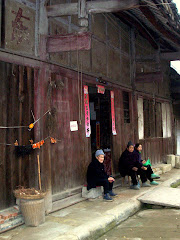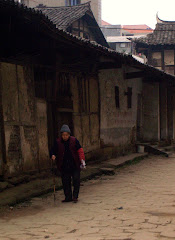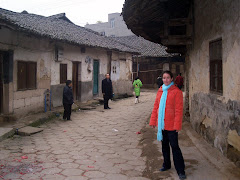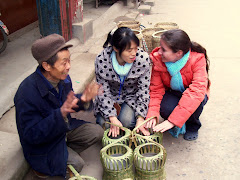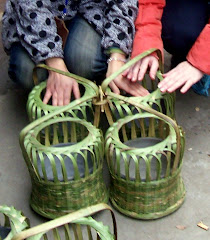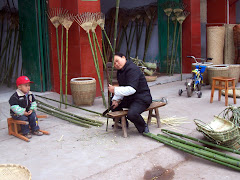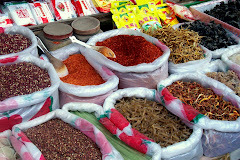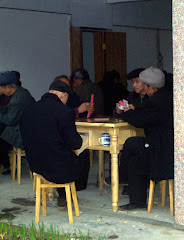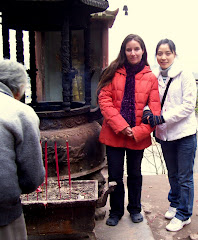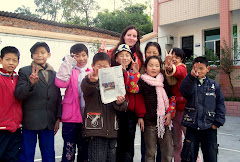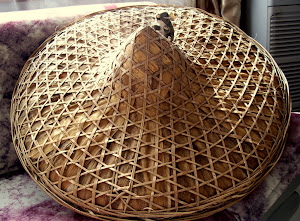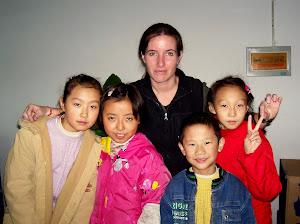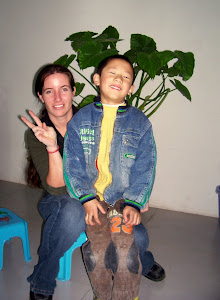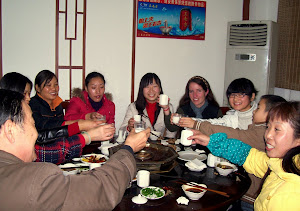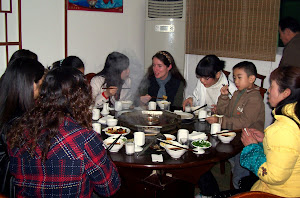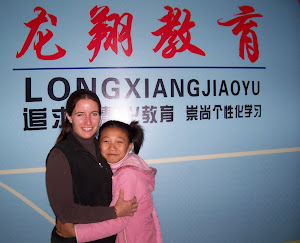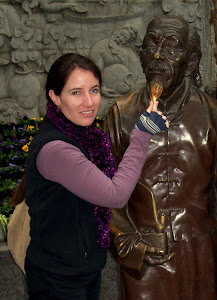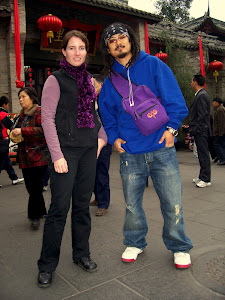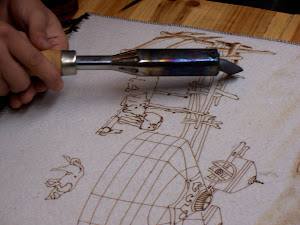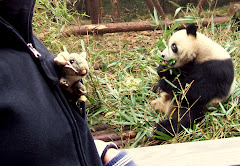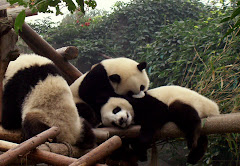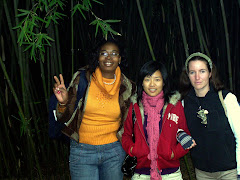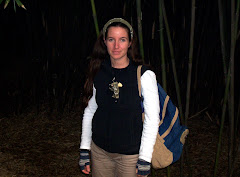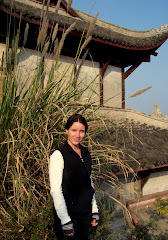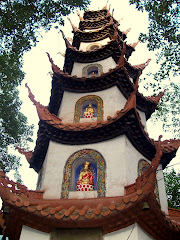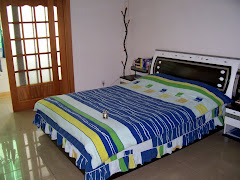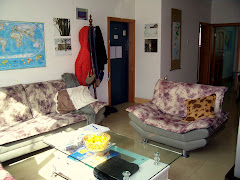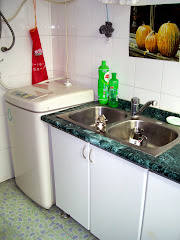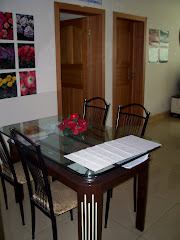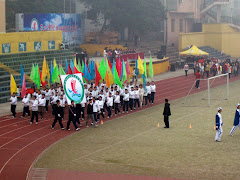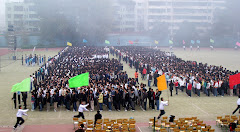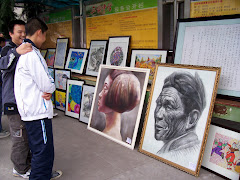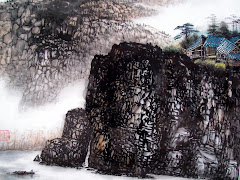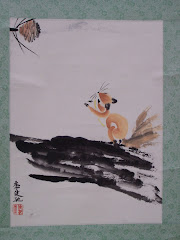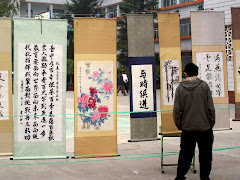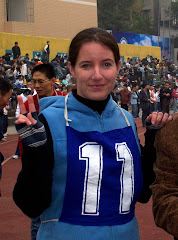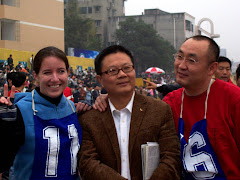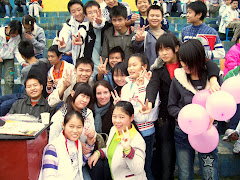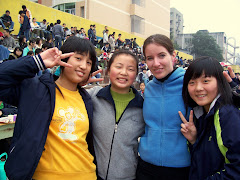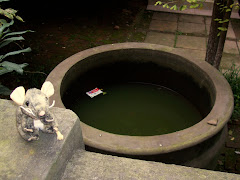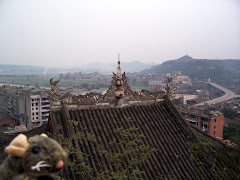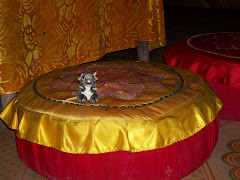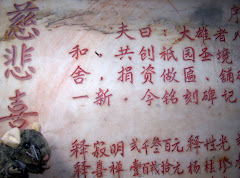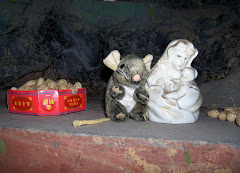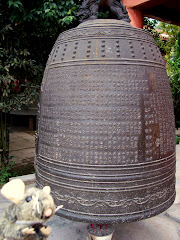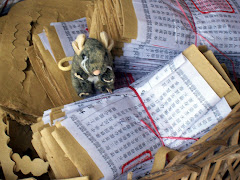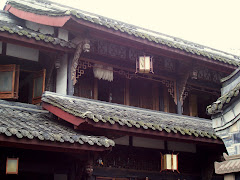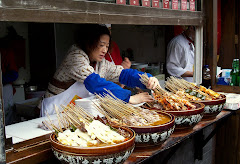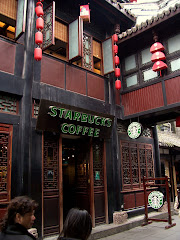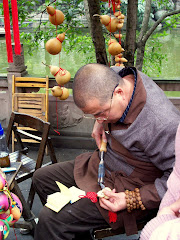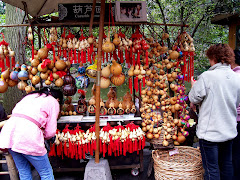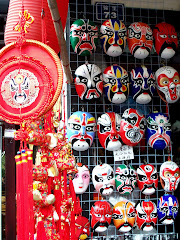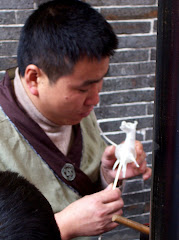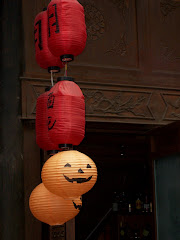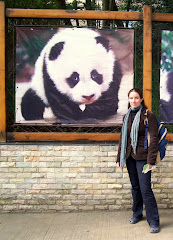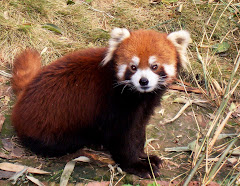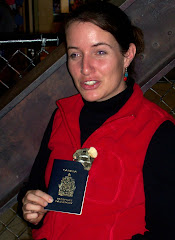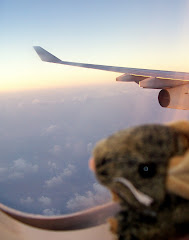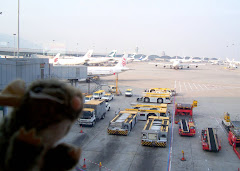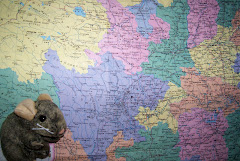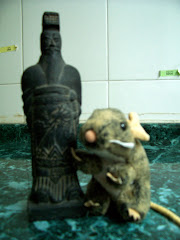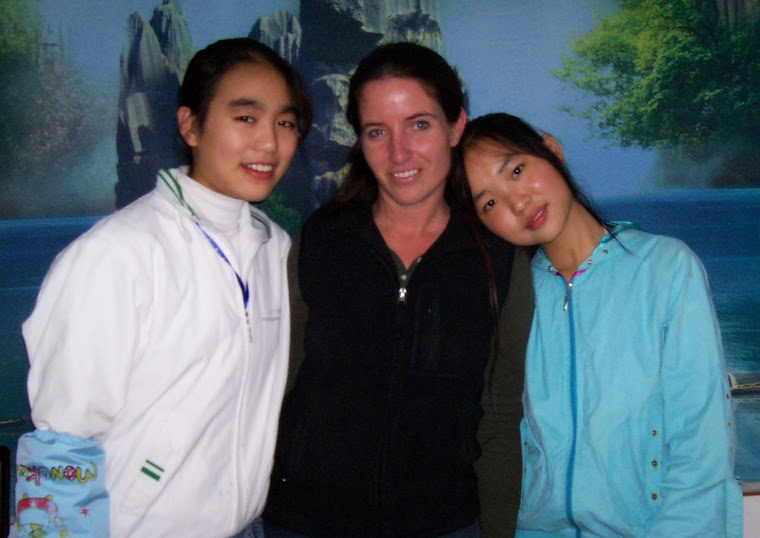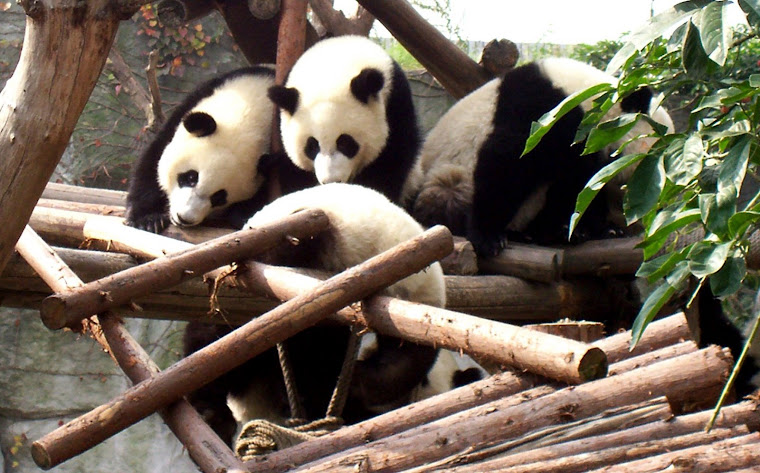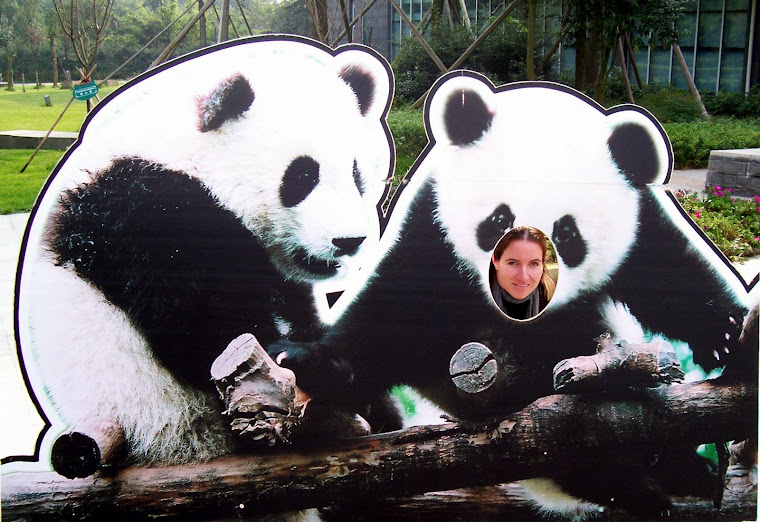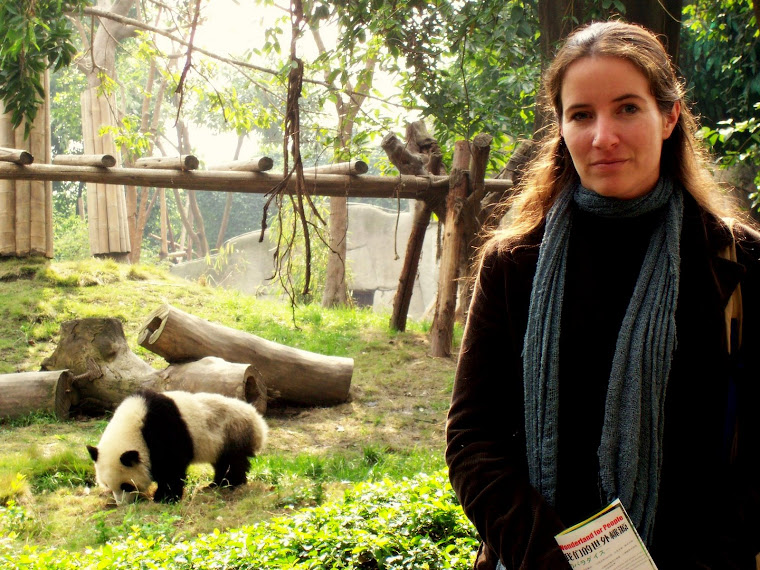Ngawa (Aba in Chinese)
I’d been counting down the days to the winter holiday since my return from Thailand, and the last few weeks sped by, mostly because Tsokyi, a friend of mine from Ngawa had been staying with me. The last day of school came quickly, and on the Friday of the second week in December, I taught my last tow classes, finishing at noon, and Tsokyi and I were on the bus heading for Chengdu after a hasty lunch and grabbing our bags, which were all packed and ready to go to night before. Spent one night in Chengdu, meeting up with friends and doing some last minute shopping, before heading to the northeastern part of the city to he bus station which serves the Tibetan areas of Sichuan. There, we found out that there were no buses. Period. It was ironic really, only a few days before, the area had been officially “opened” for foreigners, after having been closed since March, but though “open” there were no buses running. Tsokyi and I asked around though, chatting to some of the Tibetans there, and they said there was a sort of taxi service, which left early in the morning. These were private cars, whose drivers had seen a way to make some cash. It wasn’t cheap, 220 yuan from Chengdu to Ngawa town. The train to Xining from Chengdu, much farther away, was only 170. However, there wasn’t exactly an abundance of options, so we decided to go. Part of the service was to book us into a nearby hotel, cheap, and near the station, where the owner would take us to the station in time to meet the driver, as we were to leave at 6am. This seemed a sensible idea, so we had a quick dinner at a roadside stall, feasting on a Chinese sort of kebab. One could choose from about 20 different baskets of meat, tofu or vegetables on wooden sticks, and these were deep-fried and served with bowls of super hot chilli sauce. Turned in early, since there was very little to see or do around the station, and it would be a long trip the next day. Leaving at 6am, we expected to arrive early evening. It used to be a lot faster apparently, but the road went through the earthquake affected regions, through Wenchuan town, and in many areas was still badly damaged. So off we went early the following morning. It was still dark when we left, but there wasn’t much to see until we escaped the outskirts fo the city, and started to head up into the foothills. After an hour or so, we reached some of the areas badly damaged by the earthquake. Lots of collapsed farmhouses, tiles scattered on the ground, and people living in makeshift shelters or tents made with heavy tarps. It’ll be a long, cold winter for them. In many places the road, or what was left of it, was a jigsaw puzzle of cracks and holes. In some areas there was no road, it was still buried under half a mountainside! There had been many avalanches, and the cars had just created temporary tracks veering around the buried sections of road. We drove slowly through the town of Wenchuan, one of the towns that had been worst affected by the quakes. The poorer suburbs of the town were still and expanse of rubble, with piles of cement and stone left in place of what had been homes. Apartment building were half collapsed, so you could see into what had been peoples’ homes. But in the centre of town, most of the better quality buildings, including the government buildings, police station and several newer hotels and shops looked intact, though many buildings had cracks and fallen plaster. I’d hear many rumours that most of the damage and deaths had been caused by sub-standard buildings, and from our brief drive through, it looked to be true. Not far out of Wenchuan, we entered the Tibetan area of Sichuan, obvious by the style of homes and the prayer flags on the hills. My heart lifted, it was like coming home!
Tsokyi slept in the front seat, while I gazed out the window. Most of the houses in the eastern part of the Tibetan areas looked similar to those I’d seen in the Lhagong area, built solidly of stone, window frames colourfully painted with traditional designs. Herds of yak and sheep dotted the hillsides, and the passes had chortens and prayer flags alongside the road. Our driver had a stack of printed lungda papers, which he handed us to toss out the window as we crossed the passes, shouting Lha Gya lo as the colured papers soared away on the wind. Tsokyi, bless her, had started to get really carsick as we sped around the serpentine bends of the mountain road. We had stopped once for a quick breakfast, but the driver was on a serious mission, and sped along, singing along with folk songs on the radio at the top of his lungs. Around 1 in the afternoon, we reached the town of Ngawa, called Aba by the Chinese. The other passengers were shocked, as we’d arrived hours before we’d expected, thanks I suspect to some dodgy “shortcuts” we’d taken along tracks that didn’t look as though they were fit for anything apart from yaks or mountain goats to navigate, and while the others slept, I stared anxiously down a vertical drop into deep valleys with foaming and frothing white water below, trying to decide how stable the crumbling edge of the road was likely to be. Why do I inflict these death-trips on myself? Why don’t I take the train like sensible people? But having said that the scenery was stunning, and the prospect of near death tumbling down a cliff into the abyss was at least better than dying a slow and painful death from disease. Right. Anyway, we did arrive intact in Ngawa, none of us happier to arrive than Tsokyi, who’d started to llok green around the gills. We were to stay with her family, of course, and meet up with Yang Yang, Dhopey and Khepey, more girls from Ngawa, whom I’d met in Chengdu, who were relatives of friends in India. They were surprised to see us so early, but quickly had a pot of tea boiling and a table set for lunch. Tsokyi’s mom is renowned for her quick tongue and sense of humour, so we were all soon in fits of laughter. Shortly afterwards, Dorje, Singye and a friend, Jamyang stopped by, as they had heard I’d be arriving that day. Dorje and Singe are friends from the Tharshul school, and they’d been in Ngawa, taking courses at Kirti monastery for the past few weeks.
Ngawa is a small town nestled in a long narrow valley, with one long main road, and three or four crossroads. At the eastern edge of town, on the way to Chengdu, was the large Ser Gonpa, a Jonang monastery. I was hoping to meet up with an old friend, Tashi Choekoe and his brother Choemphel there the next day. On the other side of town was Kirti monastery, housing about 700 monks, which had suffered terribly during the uprising in 2008. I asked around for Tashi Choekoe’s phone number, not difficult to do, as everyone knows everyone, and monks returned from India are fairly well known. Yes, no problem, Choekoe was there, and was now the abbot! That made me a bit nervous to go see him, I hadn’t realized he’d become an abbot. Protocol here is a bit more difficult in some ways than India, but I knew he’d be upset if he found out I’d been in town and hadn’t gone to see him, so we arranged to go at noon the next day. Meanwhile, yang Yang and Dhopey hauled Tsokyi and I off to Yang Yang’s family’s teahouse, where we sat chatting over hot tea and dinner, before going out to a dance hall to watch a performance of dance and song by a troupe from Dege area. There was a huge audience of nomads, and the usual hooting, cheering and hollering of appreciation at the end of each number. It was almost as much fun to watch the audience as the dancers, and they seemed to spend about as much time watching me! I was the first foreigner in town since at least March 2008, as the area had been closed, and since it was bloody freezing, and there were no buses, there weren’t likely to be hordes of tourists rushing to come anytime soon. Around midnight Tsokyi and I were struggling to keep our eyes open, so we all left, running up the street arm in arm to keep warm, laughing and singing. Not long afterwards, I was curled up under a huge pile of quilts and blankets, so heavy I could barely move, but toasty warm. It seemed mere seconds had passed before I opened my eyes again and found it was already morning. We got up, had a quick wash in icy water at the pump, and dashed indoors for breakfast of coffee and tsampa porridge. The plan for the morning was to visit Kirti monastery, a big Gelukpa monastery built in the 15th century, so after breakfast we set off through town. It was odd to be there, after hearing so much about what had happened there the past year. You could still see bullet holes in the shop windows. One of the problems with speaking the language was that I spent the next weeks of travel listening to all the stories of what had happened that year, all the people killed, arrested or missing. It was good to know, in a way, but oh so very hard. Sitting listening, hearing terrible stories, and ending up with all of us in tears was how I spent many an evening over the next weeks. A lot of that I can’t write here, but I will never forget what I heard. We arrived in the monastery, and made a detour off to the left to see the huge Buddha statue outside the monastery wall near the Snag-khang, where juniper was burnt as incense. Stopped to chat with some extremely cute and extremely grubby young novice monks, who wanted their photos taken. They were thrilled by the digital camera, where they could see their own photos, and it took a while to peel ourselves loose from the admiring crowd and meet up with Yang Yang and Dhopey who were waiting to meet us at the base of the chorten. Together we wandered into the monastery proper, to watch the debate sessions and the young monks training for the Monlam Cham dances. The air was crisp and cool, but warmed by the late morning sun, and the monastery buildings beautiful against the hills and the vibrant blue of the sky. The monks robes were deep maroon, as they swooped and spun in the intricate steps of the Cham dances, while the shouts and handclaps of the debate, and the scent of juniper made me homesick for Gomang. It was all very idyllic and beautiful, until you looked closer and noticed the military outposts with their machine guns on the hills overlooking the monastery, and all the video cameras fastened to the electricity poles. Only then did you realize that it was all an illusion of peace and happiness. We left shortly afterwards, planning to head back to Ser Gonpa to meet Tashi Choekoe. A friend’s brother had arranged for his brother to meet us, and he drove us down through town out to the monastery. We were shown to the abbot’s house, and I went inside, kadag in hand, looking forward to meeting an old friend. Was shown into the room, to find that it wasn’t Tashi Choekoe at all, but another monk, also called Choekoe, who had also been in Gomang! I pretended, quite successfully, I think, that it was him I had been intending to meet all the time, and we chatted for a while about news from back “home”. He gave me Tashi Choekoe’s phone number, and it turned out that we had probably passed each other on the road the day before, as he had gone to Chengdu with his brother the previous morning! Afterwards, we strolled around the monastery for a while, admiring the yellow and gold chorten before heading back into town to shop for new music cd’s and have dinner. That night, I stayed with Yang Yang’s family…it was a bit like musical beds in Ngawa, as I was invited to a different home each night! The next day we were to go out to Ngawa Gomang monastery, something I was particularly looking forward to, since it was the home of many friends, and I’d heard so much about it over the years. Ngawa Gomang is about a 30 minute ride out of town, through some small villages, in one of which Dhopey lived. We were to stay with her a couple days later. The monastery also housed about 700 monks, and sprawled across a large area of land. There was a beautiful chorten at one end, and after doing kora around the main prayer hall, and checking out the debate ground, we headed in that direction. To get there, we had to pass the monastery school buildings, also closed down this year. Once at the chorten, the monk attendant was more than happy to let us go to the top levels, and into the shrines. At the top, the chorten was covered in gold leaf, and painted with the huge Buddha eyes facing the four directions, like the famous stupas in Nepal. From the top, we could see out across the monastery and the valley, as far as the snow-laced mountains in the distance.
After chatting with the monks for some time, and taking loads of photos to send back to friends in Gomang, we headed back down, as it was nearly time for debate to finish, and we wanted to meet up with some monks who were relatives and friends to friends of mine back in Gomang. Stayed with them, exchanging news and gossip, and drinking endless cups of tea before returning to town, promising to come back the next night for the Parchen Damcha ceremony. The plan for the next day was to meet up with Dorje, Singye and Jamyang, and go for a trip up into the hills overlooking town, so we could get a panoramic view of the whole valley. This was arranged for early afternoon, and after a leisurely morning, and a visit to family of another friend, we met up in Kirti, and drove up into the hills. Standing on the edge of the hilltop, we could see the whole town below, and count as many as 9 small monasteries dotting the hillsides around the town. Ngawa is full of small monasteries, Kirti, Ser Gonpa and Ngawa Gomang are probably the largest of them all, but there are many smaller ones, ranging in size from 20 to a couple hundred monks, and from several of the different sects, Gelugpa, of course, but also Nyingma, Jonang and Bon. We stayed there gazing around and taking photos until we realized how badly we were shivering in the gusting wind, then headed back down to spend a couple hours chatting in a teashop. Dorje and the others were trying hard to talk me into changing my travel plans, as I’d originally planned to go to Machu, then Lichu, and they tried to convince me to go to Dzoige instead, as they wanted me to stay with their families. Didn’t take much persuading, as I’d been to neither place before, and wasn’t too bothered which direction I took to Lichu. So Dzoige it became, and they spend the next hour calling friends and families, telling them I’d be coming. This trip is turning out to be a bit like being a parcel, shipped from place to place, from friend to friend! The next day, Tsokyi and I planned to head back out to Ngawa Gomang, but first, we were to stop for lunch at the home of another Gomang friend of mine. He’d not seen his family for about 12 years, and I was under orders to take lots of pictures. We were picked up by one of his brothers, and drove off up the road to the monastery, but turning off at one of the villages to the family’s home. Tibetan houses in Ngawa are very different from those in the Kham or Gyalrong areas. Here they are 3 storey farmhouses, but of large bricks made of back clay mixed with grass, and plastered over with more clay, then surrounded by high walls in the same method, creating impregnable fortresses, guarded by huge furry black and tan Tibetan mastiffs the size of small ponies! Once inside the walls, the houses look tall, wider at the bottoms than at the top, and splashed with whitewash and ochre. The first floor is used for livestock and a storehouse for their feed and tack for the horses. The second and third floors are reached not be stairs, but by logs carved with notches, worn smooth with years of use. These are not so easy to climb, though the Tibetans ran up and down with the ease of a lifetime’s practice. I was much less confident, contemplating with horror the prospect of having to climb down at night if I needed to go outside for a toilet break! This is never an easy mission at the best of times, as one has to negotiate the way past the family guard dogs without getting eaten or mauled, and it’s always pitch black, as there’s no such thing as streetlights here! Nights in Tibet are stunningly beautiful, with more stars than I’ve ever seen anywhere else, even at sea, the sky a velvety black, and the wind cold and clean. But I digress…
The second floor was used as storage, and had prayer wheels around the walls, that we spun before climbing up to the next layer where the family really lived. Here was the kitchen and the warmth of the stove, lots of good smells, as they’d obviously been preparing a feast for us. I was introduced to my friend’s parents and the rest of the clan, brothers, sisters and their spouses, and innumerable children with ruddy cheeks and runny noses. After gorging ourselves on platters of meat and momos, and exchanging news, the photo shoot started, with everyone wanting to have their photo taken with everyone else. The more the merrier, I figured, as I’d send them all back. After that, we went outside to take some more in front of the house, then drove out to another village, to meet the family of another friend, in which all the above were repeated in pretty much the same order, except that it was difficult to eat as much as they wanted me to after one feast was still trying to settle itself in my stomach! Then on to the monastery, to meet up with the monks before, surprise, surprise, another feast. It’s only humanly possible to eat a certain amount of momos in one day, I’d always thought, but it never ceases to astound me how far those boundaries can be stretched if need be. One may not be able to actually walk well for hours afterwards, but at least one can eat enough to satisfy one’s hosts! We hung out with them until they headed off to attend the prayers before the Parchen Damcha ceremony. Tsokyi and I waited a while, then wandered off towards the Tsokchen courtyard, where the ceremony was to be held, and joined the crowds of pilgrims that were shoving their way into the front section of the courtyard, to watch the procession of the main students of the class, decked out in the full regalia and the debate displays later on. We were all sitting on the stone steps leading into the courtyard, and boy was it cold! I was thankful that I was wearing my wooly sheepskin lined chuba, as the bits inside it were warm, it was my feet and ears that were threatening to drop off from frostbite! Poor Tsokyi on the other hand was freezing, as she was just wearing regular clothes and a coat. Still we stayed long enough to watch most of the ceremony, which was to last until the moon rose high enough to show over the top of the courtyard wall. We left shortly before that, as we were to go back with Dhopey and her family, to stay at their place for the night. We left our cameras with the monks so they could take more photos for the guys back in Gomang, and drove off in the dark with Dhopey’s family. She lived in another village nearby, in another of the 3 storey farmhouses, with more of those wretched stairs!
Arrived back to find her mother had kept dinner waiting, the fourth feast of the day! Sat around drinking tea and chatting for a while, then curled up under piles of blankets to sleep. Her mother slept in the next room, in what looked like a big wooden box full of sheepskins in the corner beneath a small altar. There were ropes of drying meat on the walls, and a big wooden churn in the corner. The window was small, with faded patterns traced on the wall above it in reddish ochre dye. The door in the opposite wall opened onto a platform and the log-ladder down to the second storey with its prayers wheels. Burning juniper incense wafted up through the door, creating a sweet-smelling haze in the room. I’d have liked to take some photos, or better yet, paint it, but we’d given our cameras to the monks, and anyway, I wasn’t sure it would be terribly polite. The next morning, we had to go back to the monastery to fetch our cameras, and we decided to go on horseback. Dhopey’s family owned two horses but only one saddle, so she and Tsokyi
Doubled bareback on one, and I got the other one with the saddle. We trotted off through the village, and I figured out why Dhopey had loaded her pockets with small stones before we left: to stop the dogs from chasing us as we passed the other homesteads. It was about a half an hour ride, and we rode leisurely along, talking and laughing until we reached the monastery. We brought the horses right into the monk’s enclosure, and tied them where they could nibble at a pile of hay in a corner. Didn’t take long to get the cameras back, and after a quick cup of tea, we headed back to Dhopey’s place, as we were to be picked up and brought back to town at noon. Back at Tsokyi’s home, I decided a hot shower would be a priority, as there’d be little likelihood of another for several weeks, and I was feeling fairly grubby. Upon my return, I found that Tsokyi’s mom had had a Ngawa style chuba made for me, slightly different from the Tso Ngon one that I was wearing. I’m starting to be able to pick out where people are from by the difference in their clothes now, even the more subtle differences. Does that mean I’m getting closer to being a native?! I was to leave the next morning, which would entail getting up at the unearthly hour of 5am, when all sensible people, especially those living in a place where noon is cold, let alone predawn, which is absolutely freezing, should still be tucked up warmly in bed. However, the alarm went off at 4:45, and up we got (a miraculous endeavour for Tsokyi, who can sleep until noon if left to her own devices!). Down to the bus station, and on to the Dzoige bus, still half asleep despite the cold. It had been quite an intense 5 days, so much had happened, and I’d heard so much, and met so many people. Hadn’t really all sunk in yet, and wouldn’t have a chance to, as most of the next stops of the trip were equally intense. Writing this after having returned to Santai is like reliving the whole trip, good and bad.
Dzoige (Ruor’gai)
Most of the trip to Dzoige was in the dark, and grey light of dawn, so I didn’t see much of the passing countryside. I was met at station by Konchok, a friend of Dorje and Singye, from their monastery. I had spoken with him several times, as he’d gotten my number from Dorje after I returned from Tharshul this past summer. He sent messages now and then to improve his English, and keeps saying he wants to come live in Santai for a month or so to learn English. I was shocked to see that he was on crutches, and appeared to have only one leg, but didn’t want to be rude by asking why. He swung along on them as though he’d been doing it all his life though, and I found out later from a friend that he had. He’d been injured badly when he was about 8, in a horse race where the horse ran away out of control, and was hit by a car. He was lovely to hang out with, with a permanent grin on his face. We arranged to stay the night in the station hotel, as it was close and convenient to drop off my pack and to leave the next morning. Dzoige is a strange sort of town, full of Tibetans, but built in the new and ugly version of communist cinder block square buildings. Still, it was bustling with activity, with a large market in one street, with Muslims selling large frozen chunks of various dead animals, mostly yak and sheep, and carts with fruit or vegetables, both fresh and dried. Loud Tibetan music blared out of the shops selling CD’s and cassettes (yes, they still sell and use cassettes here!) We had a quick break for lunch, stopping at a small restaurant that sold some of the best momos I’ve ever eaten, before heading to the outskirts of town to visit the 18th century Taktsha monastery, which houses about 100 monks. Konchok told me I simply had to visit the monastery’s library, which had been built just a few years before. It was a beautiful new 3 storey building, painted ochre yellow. The first floor, Konchok told me, was the library, while the second floor had been made into a museum, and the top floor was a small temple. It had already become renowned in the area for it’s collection of books, mostly in Tibetan with topics ranging from Buddhism texts and history to mythology, medicine and astrology. There are also books in Chinese and English, but the monk who had sponsored the project was focusing on the old texts, trying to build up a comprehensive collection. However, we had no luck finding the gatekeeper, and the doors to the compound were locked. Instead, we did a couple of kora, and wandered around the monastery buildings, going into the main prayer hall and several temples. Dzoige doesn’t tend to be on the tourist circuit, what there is of it, at least not for foreigners, and people looked at me as though I’d dropped from the moon, though they were thrilled when they discovered they could talk with me and I could understand most of what they said. Finally, we found a helpful monk who said that if we came back the next morning, he’d arrange to let us in, even if the gatekeeper were away again. So back into town, and we went next to visit some of Konchok’s family in the local school. The kids had just finished writing an exam, so were milling around outside, but crowded round to listen when we stopped to talk with Konchok’s niece and nephews. Next stop was to visit more of his relatives, who had been forwarned of our arrival, and prepared a huge meal, yet more slabs of boiled meat and momos! Spent the evening there, listening to folk tales from his old uncle, who sat near the fire, arthritic hands with their swollen joints beautiful in the firelight, as he spun his rosary beads while holding his audience captive by his tales. So many of these old stories are being lost now, as TV and radio take the place of the evening story telling sessions, there aren’t so many people left now who know all the old legends and fables. Back to the hotel, and up again early in the morning for a quick breakfast before heading back to the monastery to visit the library. True to his word, the monk was waiting outside to let us in, and we wandered through the library, admiring the rows of books in their brocade and cloth wrappings. Next upstairs to the museum level, with its big glass cases full of all sorts of antique items: suits of chain mail, and weaponry, household items like churns and all kids of other utensils, which looked to me like instruments of torture, but Knochok assured me were cooking tools of various kinds. There were old leather prayer wheels, and faded robes and other monk regalia, as well as a whole set of cases containing ancient texts printed and illustrated with gold and silver. Many of these would have been hidden away to survive the cultural revolution, and brought out not long ago, to be stored in museums. In the centre of the room was a big glass case holding a Kalachakra sand mandala. It was fascinating, and I could have spent much longer looking at all the curiosities. There were even things like a sheep skull with three horns! Finally upstairs once more to the temple, with its gold covered status of Tsongkapa and Dolma, and the grand views out over the monastery and town below. By the time we finally left, it was early afternoon, so after a fast lunch of thukpa (noodle soup), we grabbed our stuff from the hotel instead of the bus, as we’d originally planned, were picked up by one of Dorje’s friends’ brothers, who had a car, and had been told to play chauffeur for us! We left town, heading north on the road towards Lichu, but turned off after about half an hour, onto narrow dirt track that looked like a cattle path, and didn’t seem to lead anywhere except randomly onto the grassland in the direction of the foothills. However, after bumping and bouncing along for another half hour, a village came into sight, and we turned off the track, and drove straight across the grassland towards a cluster of houses on the eastern side of town. We were going to visit Singye’s family first, I was informed, then had several other families to go and see before going up to the monastery. We turned into the family’s courtyard, but had to sit and wait in the car while the family pulled off the huge mastiffs, which were leaping at the car, and barking madly, and appeared quite willing attempt to bite holes through the steel to get at us! I’m not afraid of dogs, but these beasts are more like a cross between a wolf and a grizzly bear! They were eventually dragged off, still barking, and we went into the house to find, surprise, surprise….a feast of meat, momos and fried bread laid out on the table near the stove. Konchok and I sat down as guests of honour, and the family crowded round, thrilled to have a foreign guest. I suspect that I was probably the first westerner to visit their village, as any other foreigner would have no reason to stop even if they had made it out to Dzoige. After an hour of talk and eating, we all went outside, (the dogs had been chained, though they were leaping against the restraints, growling and barking) to take photos, as Singye had asked. Next stop in the list of places to visit was Konchok’s mom’s place. She was living with one of his older sisters to help look after the kids while the sister and her husband were out working in the fields or in the hills with the yaks. There too, a feast had been laid. Fortunately, forewarned of how many places we were to visit, and knowing by experience that there was going to have to be an awful lot of eating that day, I’d carefully not eaten much at the first place. There is a knack to this, it’s not as easy as it sounds to not eat much, but appear to eat enough to make the hosts happy that you have enjoyed their food. I can’t count the times I’ve come away with my pockets or bag full of chunks of meat or bread that I’ve carefully pretended to eat! That’s one good thing about the Tibetan chubas, they have long sleeves and the front pouch into which it’s really easy to slip hunks of meat when noone is looking, to either eat later, or feed to a dog! Next stop was Dorje’s family, with, yes, more food, and a roomful of people. I was impressed at how big the family was at first, until I found out it was actually the family and several neighbour families, who’d come to see the strange foreigner who had appeared in their midst. We had a grand discussion over where Canada was in relation to Tibet, and they were bemused by the idea that when we were getting up in the mornings, my family would be going to bed. This necessitated a whole series of drawings of the earth and the moon as well as a map of the world. Most of these people had never been out of their district, especially the women. A few of the men had been as far as places like Xining or Chengdu, and one or two had been to Lhasa on pilgrimage, but that was the extent of their travel. After a couple hours there, we carried on up into the village to Konchok’s home, where his father and several brothers lived with their wives and children. We unloaded our stuff here, as we would be spending the night there, and instead of the feast (which would come later) had a quick cup of tea with the driver before heading up to the monastery. It was called Dzoige Sera monastery, a branch, I assume of the large Lhasa Sera. There were about 100 monks, I was told. Though we didn’t see many, there was smoke rising from many stovepipes on the monks’ quarters. Konchok got the keys to the prayer hall and temples, and we did kora as well as visit each of the main buildings. We went into the protector deity chapel as well, and I was impressed by the paintings on the walls, some of which I’d never seen before. It was dim inside, and there were bodies of stuffed animals hanging from the ceiling. The door curtain had a huge white ceremonial skull appliquéd onto the rough woven yak hair cloth. The chapel was perched on the hillside overlooking the monastery, with great views of the valley below. After wandering around for a while, the driver began to look impatient to head home for his dinner, so we piled back in the car after yet another photo shoot with friends, and went back to Konchok’s family home for dinner ourselves. His sister was waiting to prepare the meal until we arrived, so while we talked and laughed (his father was a tiny little man, with a toothless grin and face full of laughter wrinkles, and had a great sense of humour), I helped his sister in laws make the small momos for mo-thuk (momos in soup). This is one of my favourite meals, and that night’s was no exception, delicious savoury bites of momo in a steaming broth. Before we had begun to prepare the meal, I’d gone out to enjoy the view over the village. Dusk was falling, and smoke from the cooking fires created a mysterious haze over the village houses. In this area, unlike the stone walls of Lhagong, or the high baked clay fortresses of Ngawa, the enclosures were protected by walls made of 6 or 7 foot high poles bound together to form a formidable topped with whittled spikes, and plastered about halfway op with yak dung and clay. In the half light, it was beautiful and serene, except for the barking of dogs and the lowing of the yaks and bleating of sheep as they were herded back into the village for the night. The whole clan gathered for the dinner, and it was fun to sit and watch the interaction between the different generations. There were 4 generations in the one room, with Konchok’s father as the patriarch, his big sons, ruddy cheeked and strong looking, their wives, with their strong arms and workworn hands, and their children, the oldest son’s daughter was also there to visit, with her very new baby, who looked to be not more than a few weeks old. The daughter herself was only 16, and been married for just a year. In many of the small village and nomad communities, people still marry very young, boys are usually around 18 -20, and girls as young as 15. Unless they go to school, and more and more do these days, it is embarrassing for a girl to still be unmarried by 18. It was a great evening, enlivened by peals of laughter at Konchok’s dad’s jokes, and later in the evening, by songs and story telling. It was warm and comfortable inside, while the wind blew and the dogs howled outside, and when the beds were made up, I was asleep within minutes.
Lichu (Luqu)
We were all up in the wee hours of the morning, to ride out to the roadside so I could catch the 6am bus to Lichu ( which means “River of the Dragon God). It was still dark outside when the family gathered to say goodbye, and for two of Konchok’s brothers to arrive on their motorbikes, ready to ride the kilometre down the dirt track to the road. Konchok clambered on behind one brother, and I behind the other, wearing my pack, and leaning forward as much as possible to balance its weight. Much to my horror, Konchok and were both given thick clubs to beat off the dogs if they were to chase us, biting at our legs! As we sped off into the darkness, I anxiously scanned the passing gates on the watch for the huge Tibetan mastiffs that slept nearby on guard. Fortunately, they all seemed to be content to let us pass, though I saw more than one huge head raised to watch us. About 20 minutes later, we reached the road, and the two men parked the bikes on the grassy slope nearby, as we stood shivering in the dawn, huddling with our backs to the icy blasts of the wind blowing down off the hills. Finally, we could see headlights, but on the grassland, distance is misleading, and it took ages for the lights to get near enough for us to tell that it was the Lichu bus. The men flagged it down, and I was bundled onto the bus, my pack stowed in the luggage compartment below, and off I went, waving through the window at my friendly hosts. As we rounded the bend, I could see them still standing and waving in the pale morning light, despite the fact that they must have been freezing, and wanting to get back for breakfast. I was a great curiosity to the Tibetans on the bus, as this was not a route commonly travelled by foreigners, and especially not the past year. Also, I had boarded at a remote village, and they had heard me speaking Tibetan. All enough to make me the main topic of conversation, and as usual, I ended up answering the usual questions, where I was from, why I could speak Tibetan, was I travelling alone? Was I married? Where were my family? It was enough to entertain them for hours, as those nearest me asked the questions, and passed the answers back through the bus to the other passengers. In this way, the trip passed quickly, and I didn’t get much chance to look out the window until we reached the turnoff for Lhamo (Langmusi in Chinese), and the bus stopped to pick up several more passengers on the roadside. Much to my astonishment, I saw that I recognized one of them, Samdup Sangye had decided to meet me on the way, and stay with me in Lichu. So we sat and chatted for the final hour and a half of the trip, and then got off the bus at the little station in Lichu, in search of a hotel for the night, as another friend, Samdup was planning to join us later that afternoon.
Lichu is a small nomad town, quite new-looking, and named after the river that flows alongside the town. We wandered down the main (and only) street, until we found a brand new hotel, strung with prayer flags, and with a load of monks outside. Apparently it was the official opening of the place, which had just been bought and renovated by a local monastery, and they weren’t actually open for business until the next day. However, Samdup Sangye begged and pleaded, and when they saw I was a foreigner, they decided it was a good omen that their first guest was to be from so far away, and they decided to allow us to stay. When we asked the cost, we were told we could pay whatever we liked, they hadn’t set the rates yet! Once in the room, the monks brought in plates of fruit and biscuits, and invited us down the hall for tea. This turned out to be a feast, with them serving us bowls of thukpa, and sweet rice with juoma, as well as huge platters of meat, fruit and sweets. We tried to refuse, but it was all part of the inauguration ceremonies, and we were obliged to accept out of politeness. I wasn’t too unhappy about this, as I’d not had time for breakfast before leaving so early that morning! After that, we went for a walk round town, posing for photos in the main square and by the river. Lichu is one of the main Tibetan rivers, along with Machu, Drichu, Sanchu and others. It had snowed in the night, and a cold wind was blowing, so we didn’t stay out long, but went in search of a cyber café. Samdup Sangye had recently learned to use email, and I wanted to check mine as well. While we were there, we got a phone call from Samdup who had just arrived in town. He came up to join us, and I taught him to use email as well. Later in the evening we found a Muslim restaurant for hot noodles and tea, before heading back to the hotel to play cards and watch kickboxing finals on TV, amusing ourselves by predicting the winners before each match, and deciding it was a really stupid sport! That night, Samdup Sangye and Samdup decided they would go with me the next day to Tsoe to see the 9-storey Milarepa Lhakhang, and from there to Labrang to meet up with the other students before returning to Lichu. So it turned out I’d have travelling companions for the next couple days!
Tsoe (Hezuo)
So we set of mid morning the next day for Tsoe, about a 2 hour trip by bus. I enjoy the bus rides for the most part, because the landscape is stunning, but the drawback is that all the buses seem full of chain-smokers determined to get through as many packs as they can in the shortest possible time. Wrapping my scarf around my face to cut off the worst of the fumes, I gazed out the window. The bus was crowded, so Samdup Sangye, Samdup and I were sitting separately, and I saw after about 20 minutes that they had both dozed off. We drove through deep valleys, alongside rivers frozen several feet in along each bank, but still running cold clear water so deep it looked black against the ridges of ice.
We arrived on the outskirts of Tsoe, and I was surprised at how large the town was, and how Chinese. It was lower in altitude than most other large towns in the area, and the Han Chinese had obviously preferred to settle there. We got out at a large bustling station on the edge of town, and I was quite glad that Samdup was with us, as he knew the area, and where to go. We piled into a taxi, and sped off for the centre of town, until we arrived in an area full of Tibetan shops and restaurants. We stopped in front of a biggish hotel, and Samdup informed us that it was the best place to stay. That was great except that when we went in to register, we were told that foreigners weren’t allowed to stay. We got the same answer at several other hotels we tried, much to Samdup and Samdup Sangye’s amazement and my disgust. I never could work out the point in that restriction, oughtn’t they to be glad to accept our money? At any rate, we ended up walking for nearly an hour around the area in search of a hotel that would 1. accept foreigners 2. accept monks and 3. meet Samdup’s standards of comfort and cleanliness. This third was possibly the most difficult of the three as he was determined to find a place that was clean enough for me to stay in, and none of my protests that as long as there was a fairly clean bed I’d be happy would change his mind. Bless him. After about an hour, we eventually did find a place that passed the above qualifications, and it was a relief to dump our stuff, and have a rest before looking for a place to eat. None of us spoke great Chinese, so it was a bit of a mission, but we opted for our usual resort of a Muslim restaurant and noodles.
I didn’t like the town very much, it was very Chinese in feel, and very unattractive with the usual soviet style cinder block housing. After lunch we went to the outskirts of town to check out Tsoe monastery, and the famous 9-storey building, the Milarepa Lhakhang.. I’d been wanting to come for ages, and Samdup and Samdup Sangye both laughed when they said they lived only a few hours away, and had been through town countless times, but had never been to the tower themselves. So we had a grand time posing for photos and wandering around the monastery. The design of the tower is pretty unique in the world of Tibetan architecture, and the inside, as with most temples is a mindboggling array of paintings, murals and statures. Apparently there is also a meteorite, though we didn’t see it. Not many monks around, though I’m not sure whether it was because there were few left, or because many of them had gone home for the winter holiday. At any rate, apart from the Lhakhang, there wasn’t much to see, and after an hour or so, we headed back into town. Samdup had some shopping he wanted to do, and Sangye Samdup and I tagged along, chatting, and enjoying the usual double-takes and remarks of passersby as to the sight of a foreigner in Tibetan dress.
Apart from the Milarepa Lhakhang, there wasn’t much to see or do in town, and we decided to leave fairly early the next morning for Labrang, where we were to meet up with more friends, and I had a few errands and people to meet before carrying on to Repgong.
Labrang (Xiahe)
So back on the bus again the next day for the 2 hour bus ride to Labrang. I had never gone via the south before, but always from the north via Jianza and Repgong. From the south, the country we were passing through is called the Bora region, interesting for me, as I’ve several friends back in Gomang from that area, and I amused myself by staring out at the passing villages, and wondering if I was looking at the homes of my friends or their relatives. We drove past Bora monastery, and I decided that next time I was in the area, I’d get off and have a look round. In the meantime, we sped on past sleepy little villages, the women out in the compounds spreading yak dung to dry in the sun, and the huge Tibetan mastiffs sprawling on their sides soaking up the heat from the midday rays.
Around noon, we pulled into the bus station, and it was nice to be back in a primarily Tibetan area, however much it had been built up for tourists after being in the ugly town of Tsoe. This area is one many people visit if they can’t get into the autonomous region of Tibet, and in many ways, it’s more Tibetan here than in Lhasa these days. After Lhasa, this is one of the main pilgrimage sites, and on the streets you can usually see a mixture of local nomads and shopkeepers, monks and pilgrims from all over Tibet. We were met at the station by Gedun Samdup, another Tharshul student, and “Tashi”, a friend of mine. Didn’t have to go far this time to find a hotel to stay in, and we booked a room with three beds, as more friends would be joining us later on. (In previous hotels, we’d gotten doubles, as Samdup Sangye and Samdup shared a bed to save cost. Most Tibetans seem to do this, and the hotels don’t seem to mind more people staying in a two or three bed room). Not long after we arrived, friends turned up: Chezin, Longtok and Sangye joined Gedun Samdup, and we all sat round on the beds catching up on news and telling jokes. Main topic of conversation of course, is whether the Tharshul school will be permitted to reopen, with everyone hoping it will. After lunch (more noodles) we wandered off down the road, window-shopping and chatting. We’d gone into one market, with stalls selling “authentic” Tibetan jewelry and trinkets for tourists, and were checking out a book stall in a corner, when I heard someone call my name. I looked up expecting to see one of the students, but it turned out to be an old friend from Gomang! He was from Serta, and had come to Labrang with a few friends to take some classes. He was as surprised to see me as I was to see him, though he had heard I was in Tibet, he’d obviously not expected to meet me randomly in a shop in Labrang. We chatted for a bit, exchanged phone numbers and arranged to meet for dinner the next day. Back to the hotel with the monks, stopping to pick up some instant coffee drinks and biscuits on the way, where we spent the night sitting round talking and laughing. The next morning though, Samdup wasn’t feeling well. He’d had a cold for a few days, and couldn’t seem to shake it, so he stayed in bed after an IV glucose injection. I’d caught a cold as well, but figured it’d pass, so I set off that morning to meet the friends I needed to see and do some errands. This turned out to be not as easy as I’d expected for various reasons, though I did manage to find my friends, and we went out for lunch together. I turned out I’d need to stay for at least two more days to finish what I needed to do. Walked back through town in time to meet my Serta friend for dinner. He was with a group of friends, and we sat and talked over a hotpot dinner. More truthfully, they talked, and I listened, trying to memorise everything they said. Back to the hotel for an early night. The next hotel Samdup was feeling lots better, but I was not, so it was my turn for an injection. I don’t tend to hold much with all these injections and IV’s that they give you here at the drop of a hat, but after a few hours, I did feel a lot better. Well enough to go out and finish the next part of my errand. Later in the afternoon, met up with the students near Labrang’s famous gold chorten for another round of photos, and to meet up with another old friend, Thupten Nyima, who’s living just outside the monastery and taking classes. The next day was to be my last day in Labrang, so worked hard to finish all the stuff I needed to do, and met up for dinner with all the students, a hotpot feast which was great fun, lots of laughing and talking, and farewells, as I was to leave for Repgong the next morning, and we’d not meet again until the summer. I was sad to leave, especially Samdup and Samdup Sangye, who had been great travelling companions over the past few days.
This has been a difficult section to write, as there is so much more I want to write but can’t. However, I have all the notes and won’t forget. After the events of the past year, Labrang wasn’t a particularly happy place, the whole tone and feeling of the town was one of fear and suspicion. Very sad, especially for the monks, who live in a state of fear, knowing they are watched. There are cameras everywhere. Enough said.
The next morning, I set off early, with Samdup and Samdup Sangye to catch a bus, but even before we reached the station, a taxi driver beckoned us from the side of the street, saying he had to go to Repgong and would charge me the same amount as the bus. This seemed a good idea, so my pack was loaded in the boot, the driver set off, Samdup and Samdup Sangye waving goodbye from the sidewalk. Not far along, the driver stopped again, hoping to pick up another passenger or two, but there were no takers, so he sped on again, If I’d been a nervous sort, it might have been a wee bit scary, driving off in the semi dark as the sole passenger, through dark gorges and miles of empty grassland. The driver was uncommunicative, his Tibetan wasn’t very good, so we didn’t talk much. However, about an hour later, he stopped to pick up two old nomad men flagging him down on the roadside, and they livened up the atmosphere considerably, talking and laughing until we arrived in the town of Repgong at around 9am.
Repgong (Tongren)
The car stopped to let us out opposite the bus station at the edge of town, where I was met by Gedun Lekshey, who was in town for a few days before heading out back to hi family’s place for the winter holiday. We took a taxi back into town, and booked me into the same small hotel where I had stayed on my last village, up and alley near Rong monastery. During lunch, however, I got a phone call from Lobsang Dargye who was on his way into town from his monastery nearby, and told me not to book a hotel, but to come and stay in the monastery that night, to meet Tenzin and Rapgye and some of their other friends. So we went back to cancel the hotel, and waited to meet Lobsang Dargye. He arrived shortly afterwards, and after doing a bit of shopping for fruit and vegetables in the market, we took a taxi back to the monastery, driving out of town up a dusty road into the countryside, through a few villages, until we could see the monastery, buildings stark white against the hillside, the gold roof of the temple gleaming in the sunlight. There were the remains of an old chorten at the entrance to the monastery, the top destroyed or disintegrated into a heap of stones, covered with grass, but the mani wheels still intact around its base. There were about 20 old women, rosaries dangling from their left hands as they did kora, and loads of kids running around laughing. We stopped just past the chorten, and were invited into a monk’s home. He turned out to be the monastery doctor, and was looking forward to actually talking with a foreigner. Many tourist come through Repgong, and visit the monasteries, but this one was mall and out of the way, with no particular attractions to mark it as out of the ordinary compared with all the bigger monasteries in and around Repgong, renowned for their amazing artwork. He was really interested in my travels, and asked questions about many countries. Several cups of tea, and a photo shoot later, we walked up the hill to Lobsang Dargye’s house, where Tenzin had been preparing lunch. More friends turned up shortly afterwards, and it turned out that Lobsang Dargye and Rapgye had been giving English lessons! It’s always great when your students become teachers themselves! One because it’s great for their confidence, and keep them in practice, two because they’re helping people who would otherwise not have a chance to study, and third because it keeps them learning to stay ahead of their students! After lunch, we went for a walk down to see the old chorten and take some more photos, meeting up with Rapgye on the way. He’d known I was coming, but when he saw us walking he didn’t recognize me because I was wearing the thick chuba and head scarf against the cold wind. Once he realized who I was, he came running up the hill, laughing, saying that I looked like an old nomad women! Monks have such a way with words… bless them! Next stop was the monastery’s new temple, a beautifully proportioned building, bedecked with fluttering yellow cloth, that billowed in the wind. Rapgye galloped off again to get the keys, and came back with the gatekeeper himself, who also wanted to meet the “Injee”. So the crowd of us entered the temple, dark at first, after the bright sunlight outside, but after my eyes adjusted, I gazed up in wonder at a huge new statue of Jampa, covered in gold leaf, but with one of the most serene and peaceful faces I have ever seen. The walls and ceiling of the temple were covered in intricate and colourful paintings. The artists of Repgong aren’t famous for nothing. I have been in many, many temple and seen thousands of paintings and statues, but this one still impressed me. Though a jewel of a place, it’s not on any tourist map, and perhaps it’s better that way. Back to Lobsang Dargye’s place for dinner, and another night of conversation. There were four or five monks apart from Lobsang Dargye, Tenzin and Rapgye, all of whom were eager for a chance to practice what English they knew. After hours of talking, laughing and joke-telling, it was time for bed, and as always, I was asleep just minutes after burying myself under the heavy pile of blankets. The next morning, we were invited for breakfast at Rapgye’s brother’s home in the village, where we sipped steaming cups of milky tea and ate homemade fried bread twists, still warm and steaming. Afterwards, back into the car, and back to town for a quick meeting with Gedun Lekshey before I caught a car to Tsekog, a 2 hour drive south west of Repgong, near the Henan area, settled years ago by Mongolian nomads.
Tsekog monastery
We sped across the grassland, held up now and then by herds of yak or sheep crossing the roads, which all Tibetan drivers take in their stride, slowing down just enough to shove their way through the herds, horn blaring as the animals shoulder each other to the sides. You can look out the window and see the white of their eyes, shaggy coats rough and thick for the winter, breath flaring white in the icy air. The farther we got from Repgong valley, the more wild and remote the landscape became, with vast rolling grasslands rising into undulating hills and snow-clad peaks in the distance. I had rolled down the window a ways to combat the inevitable cigarette smoke, but was forced to roll it up until barely a crack was open because of the freezing cold wind. The town of Tsekog appears like an oasis on the grassland, built seemingly in the middle of absolutely nowhere. Most Tibetan towns are built in sheltered valleys, backing onto hills, but Tsekog sits in the middle of a huge open plain, and the icy winds whistle through town with gale force strength, with nothing to stop or divert them apart from a few mere man-made buildings.
The car stopped in the middle of town, and we were let out, hauling our baggage out of the boot of the car. I rescued my beloved backpack, now covered with dust and travel stains from beside a large burlap sack of frozen mutton, and stood shivering on the pavement, contemplating the fact that my phone had run out of money, and I wasn’t sure where I was supposed to be meeting the monks. A crowd had already gathered to stare in fascination at the marvelous spectacle of a foreigner clad in Tibetan chuba arriving on her own in Tsekog in the middle of winter. When I asked them (in Tibetan) where I could find a public phone, it provided them with conversation topics for the rest of the day, and the crowd instantly doubled, and people vied for the chance to lead me to the aforementioned phone. It ended up that I was escorted in a group of about 20 nomads to the nearest phone, where they all squashed in after me to hear what I could possibly be wanting to say and figure out who I could be saying it to. The poor shopkeeper watched in bemusement. I don’t think he’d ever had so many people packed into his shop at once. Got through immediately to the monks, who were waiting just down the road at the station for me, and everything I said to them, I heard repeated back through my audience. “What did she say?” “I didn’t hear what she said!” “She’s speaking Tibetan!” After I hung up, it took quite a bit of effort for the packed in crowd to unpack itself and get back out the door, allowing me room to actually reach the shopkeeper to pay for the call. Got outside myself eventually, pack and all, to find the crowd doubled in size, and the new arrivals being informed of all I had just said on the phone. I was immediately quizzed on where I was from, why I could speak Tibetan, where I had just arrived from, where I was going, and who I was meeting. This last was interrupted by the arrival of the monks, which answered the question most efficiently, and I was allowed to escape the growing crowd of nomads, and carted off down the road to a restaurant to have tea and lunch, and warm up before heading off to the monastery. It was great to see everyone again, the first time since the summer. All were students from Tharshul school: Choegyam and Konchok, Lobsang Gyatso and Rabgye. The others were waiting back at the monastery. After a delicious hot lunch of noodles and tea, we got in a car to head out to the monastery. Driving up through town, we turned off on a narrow dirt road, past a hill covered in prayer flags, and carried on for about 10 km, leaving the outskirts of town behind, and across the grassland, until the road became just a mere suggestion of a track. Passing several nomad encampments, we finally came around one hill to see the monastery nestled between two hills, facing a glistening ribbon of frozen river, shining in the cold afternoon sunlight. We drove past two snowy white chortens, and turned in to the monastery passing the row of mani wheels, and the tsokchen until we stopped outside the enclosure of one monk’s residence. Out the door came Shedup, Lobsang Samten, Paljor, Lodue and Tenphel, wielding kadags and grinning from ear to ear in welcome. I was whisked off through the gate, while the monks unloaded my pack, and taken inside what turned out to be Shedup’s home. They had loaded a table with biscuits, fruit, sweets and a huge place of chunks of boiled meat, and a kettle of tea was steaming on the stovetop, so within minutes we were all seated around the stove, hot cups of tea grasped in cold fingers passing on all the latest news and gossip from the past few months. By this time it was mid afternoon, and after an hour or so, most of them had to leave to attend a class in Tibetan grammar. Leaving Paljor with me so I’d not be bored or lonely (as if!) and loading the stove with fuel until the metal glowed red with heat, they dashed off, promising to be back within 45 minutes. It was actually nice to have a short time to breathe and rest from all the socializing, and when they cam running back from class a short time late, with the news that their Tibetan teachers were coming for dinner to meet me, I was quite ready to feel sociable once more. Dinner was a typical Tibetan feast, with the table groaning under so many plates of food that one had to assume there was a table down there under the food somewhere, it certainly wasn’t visible. There were the usual platters full of chunks of boiled meat still on the bone, more platters of momos and fried vegetables, bowls of fruit and plates of raisins, nuts and sweets, more bowls of roasted sunflower and melon seeds, and to top all that off, a huge pot of thukpa (noodle soup) was boiling on the stove. Shortly afterwards, the teachers arrived, both senior monks of their monastery, bringing kadags and sitting to chat with me. They already knew a lot of the answers to the usual questions such as where I was from, or how I knew Tibetan, but they were interested in Canada, and asked a lot of questions about life there, and about living in India. After dinner was over, they left, and the students all came in. (They had spent dinner time serving and cleaning up: Tibetan monk students never eat with their teachers, but serve first and don’t eat themselves until afterwards. In the monastery I always used to prefer waiting until the “official” posh dinners were over, and then eat in the more relaxed atmosphere with the servers!) So they all sat down to eat from the still heaping platters of food, and we spent the next few hours laughing, telling stories and jokes. That night, Shedup arranged for me to sleep in his room, making the bed ready with a pile of so many blankets and sheepskins that once I was under them all, it was almost impossible to even move. It was toasty and warm, and I was asleep within minutes. Shedup was up and bustling round lighting the stove early the next morning, before he headed off for prayer and then class, but I stayed curled up under the blankets for a half an hour or so more, before getting up and dressing hurriedly in the cold morning air, heading outside past the monastery walls as there was no toilet area in Shedup’s enclosure. It was still early, only just past dawn, and my breath was a puff of white in the frosty air. One thing about living in Tibet is having to expose one’s poor backside to the freezing cold air in winter! If I ever do manage to live in Amdo permanently, I will have to invest in some sort of enclosed toilet facility, at least one that keeps the wind out! After heading back for a quick facewash and chasing a hungry yak out of the enclosure gate,, I decided to do a brisk kora round the monastery, figuring it’d warm me up a bit and collect a bit of good merit at the same time! Taking my camera along, I set out round the mani circuit, admiring the scenery, and walking quickly to get my blood stirred up. The monks were in prayer, so I circled round the back of the temple, and climbed up the hillside at the back before returning to Shedup’s home to stoke the fire before he came back from prayer. But when I arrived, there were two nomad women there already, heating tea, and sweeping up the scattered sunflower seeds and debris from last night’s feast. Chatting for a while, it turned out they were Shedup’s mother and sister. Handing me a cup of hot tea and bowl of tsampa, we sat round the stove until Shedup and the others arrived from prayer, cheeks red with cold and laughter. After breakfast, the women left for home, and we headed outdoors for a walk round the monastery, since they had borrowed the temple keys from the doorkeeper. They showed me around the monastery, and we ran down to the river to take photos on the frozen surface, before carrying on back behind the monastery, taking photos on the hillside, messing around and playing jokes on each other, the monks jumping off large boulders, and taking photos of each other in the air so it looked like they could fly! After a couple hours of this, we were cold and hungry enough to want to head back inside, so aced each other back to Shedup’s place, where lunch was made ready in record time. Being a beautifully sunny day, they decided to set up the tables in the glassed in porch area that is common in many homes in the Tso Ngon region. It was lovely and warm, as we sat round, eating chunks of meat with greasy fingers, and toasting each other with bowls of orange juice. Around 3 o’clock, the car arrived to take Konchok and I back to town to meet up with Choegyam, who’d been calling since mid morning, asking us when we were coming back to town. It had been planned that Choegyam and Konchok were going to go to Tharshul with me to study English and drawing for the 3 weeks I’d be staying there, returning home at the New Year. So with the noisy farewell of the rest of the monks ringing in our ears, and promises to meet up again in the summer, we set off back to town. Choegyam was waiting for us, having arranged a place for us to stay in his sister’s place, a small hotel of sorts, but with no stove, just a space heater, which made very little impact against the cold, so that it wasn’t much warmer in than out. However, he had also borrowed an electric blanket, so sleeping would be toasty warm, getting up would be the only problem! We went for a walk round town, once again to the amusement of the locals, and it was funny to hear “See! That’s her there!” and know that my arrival had obviously been the topic of many a conversation the night before. Went with Konchok to visit some relatives of his, nomads who made chubas in town during the winter months, and returned to their stock on the grassland in the spring and summer. Were fed meat and tea yet again, the usual nomad hospitality dictating the need to offer guests the best food they had. This meant them taking down a huge frozen haunch of yak meat and hacking off chunks to boil, then piling the steaming meat on a bug plate and handing us sharp knives with which to cut off bite sized pieces, washing them down with endless cups of milky tea. After an hour or so, during which several neighbours “dropped in” to borrow various things, and at the same time to check out the foreigner that they had heard about, Konchok and I returned to Choegyam’s sister’s place, where Choegyam was waiting impatiently for us. We then went off together to the town’s one cyber café, as it had been quite a while since I’d checked my email. After an hour there, we left, greedily gulping in the fresh night air again. Cyber cafes here are always so full of people smoking that one has to peer through a haze of smoke when one enters, and for hours afterwards, your hair and clothes reek of smoke. The cyber café was at the opposite end of town from where we were staying, and the wind was gusting down the street, so we decided to catch a taxi, even though it couldn’t have been more than a 15 minute walk. Just outside, a car was just pulling away, and Choegyam dashed over to see if we could get a lift. The driver was Chinese, but spoke some broken Tibetan, and was happy to take us. So we piled in, and the car started slowly down the street. Very slowly. So slowly in fact, that we could have walked faster. I was sitting in front, and the driver was staring intently at the street as though it might disappear from sight, and chatting cheerfully over his shoulder to the monks and I with whiskey laden breath. He was very, very drunk, and very happy, telling us over and over he would take us wherever we wanted to go, it being his pleasure! Joking, Konchok told him we wanted to go to Guinan (where in fact, we did want to go, the next day – it being about a 4 hour drive away.) Happily, the man said he’d be more than happy to take us, and started to turn off to take the road in that direction! Hurriedly Konchok and Choegyam told him they were kidding, upon which the driver started laughing uproariously and carried on driving through town instead, still at a snail’s pace.
Finally, about half an hour later, we arrived at the sister’s place, and we got out, the man refusing to take any money whatsoever for his “taxi” service, and turning slowly back up the road the way we’d come. At least for a drunk driver, he’d have to be hit by someone else to do any damage, since the pace he was driving at, he’d not even kill a sheep, as it’d have more than enough time to get well out of the way before he could actually hit it!
Up early the next morning, breakfast of tea and tsampa, and load up the car ready to head north to Guinan. The boot was full, with my pack, and a stock of food for Konchok and Choegyam to last the 3 weeks they’d be in the monastery, tsampa and chura, a large wheel of butter, a sack of capsi (fried bread chunks) and another burlap bag containing a large frozen leg and shoulder of yak meat.
Guinan and Tharshul
Off into the morning light we went, driving across the grassland, and watching the landscape become hillier, as Guinan is several hundred feet higher in altitude. I always enjoy these trips, even in the winter, when the grassland plateau is a palette of yellows and browns, rather than the vibrant green of the summer. There are still a multitude of shades of colour, from the dusky blues and purples of the distant hills to the many shades of brown from rich ochres to the softer shades of grey brown on the hibernating grassland. Black dots of yaks dot the hillsides, and flocks of sheep and goats, tended by herders dressed in the thick sheepskin lined felt chubas feed on what grass they can forage. The herders provide splashes of bright colour against the winter scenery with the scarlet or fuschia sashes round their waists, the women often with pink or turquoise headscarves wrapped round their hair and faces against the cold wind.
Arrived in Guinan several hours later, and were met by Choezin, who had come down to town to meet us. First stop after leaving our stuff in a nearby shop until we were ready to head back up to the monastery, was a lunch of noodles in the usual Muslim restaurant. While Konchok and Choegyam went off to do a few errands, Choezin and I headed up to the police station so I could register, and fill out the forms for foreigners so that there’d be no issue with my staying. After doing a few errands ourselves, including sorting out a new phone number for me while I was in Qinghai, we were ready to go to Tharshul, so loading up a car, we set off up the hill and over the pass to the monastery. Turning off the road onto the bumpy, potholed track to the monastery feels like going home now, like the ride from Hubli back to Gomang after being away…I know so many of the monks there now, and have so many friends there, it is always nice to get back. It had been arranged for me to stay at Ngawang’s place, as there was no water in my old room in the school, and at any rate, it would be really cold down in the school buildings, as they are open to the wind, whereas the main part of the monastery complex is protected by a range of hills that encircle it on three sides. Driving slowly up through the monastery, past the Tsokchen and debate ground, we pulled up outside Ngawang’s place He was in retreat, meaning he wasn’t able to come outside his walled enclosure, but his students came out, and helped me haul my pack up into the room I’d be staying in. As always, it was really good to meet up with old friends again, though for the time being, several of them were I retreat, unable to go outside the walls of their compounds. First thing, as always, was tea and yet more food, before settling down to chat and catch up on the news of the past months, and stories of my trip up. We met up too, with Longtok and Gelong, who had stayed on in the monastery after the school closed, taking a few classes in Tibetan and history, and staying in one of the teacher’s homes. They were due to return home for a few weeks, before the New Year holidays. After they left I began to plan for the classes I was to start the next day. Konchok and Choegyam of course were to have classes, at least 2 a day, plus drawing time in the afternoons, and a couple of the Tharshul monks wanted to study as well. Choezin and Ngawang arranged to have a class in the evenings, and a few students, family to Tharshul monks had also come to the monastery, like last year during the winter holidays, to learn English. It ended up that I was to teach 4 classes a day, plus 3 hours of drawing in the afternoons, when the light was good. Ngawang’s was a great place to stay, he is such fun to talk to, and his two students, Damchoe and Sherab were obedient and fun as well. Sherab is quite talented in drawing, especially for one so young, so the next days passed quickly, with classes, drawing and meals with friends. However after only 5 days, there was a phone call from the police station, telling Choezin I would have to go back down to the station, as they wanted a written history of my life, where I had gone to school, my family’s names, what countries I had been to and when, basically the story of my life. I was in class at the time, so afterwards, Choezin and I headed back down, wondering what had prompted the need for me to go. When I arrived, it turned out that the police chief in charge of “religious affairs” had found out that I was there, and that meant I had to go. Foreigners are not technically allowed to stay in the Guinan area, and once the top brass knew officially that I was there, they would have to follow the rules and make sure I left. I was told I had three days to leave. Choezin begged and pleaded, and I was given five, but we both had to sign and fingerprint a letter saying that I would be leaving on that date. So back to the monastery we went, both frustrated with bureaucracy, but knowing there was little that could be done about it. I then had to break the news to the poor students, who were upset that yet again their studies were being cut short, but again, knowing well that there was no real alternative. I then had to decide where to go for the two weeks before the New Year holiday (when I was to be allowed to return to the monastery for a few days). There were of course many places I could go, to visit other friends, but the option of going to teach for a few weeks in a winter holiday tuition school near Tsekog seemed the best, since Konchok and Choegyam could go with me, and they at least would have some chance to study for 2 weeks more. So after the five days were up, we reloaded another car with all the food they had brought, and my pack, half empty apart from a few clothes and teaching stuff, and set off back down the road we’d come little more than a week before.
Tsekog crossroads
When we reached the crossroads we’d passed on our way up to Guinan from Tsekog, we turned off on the road towards Rapgya, which turned rapidly into a pitted gravel and dirt track leading into an apparent wilderness, with the wind sweeping across the dry yellow grassland, and no sign of settlement in sight apart from a few distant herds of yak on the hills. We drove on and on, until we finally spotted a small village of sorts up ahead. Konchok and I both assumed this was to be where the school was located, as is was the only sign of habitation for miles, but once we reached the village, Choegyam told the driver to turn off on an even more potholed track to the right. We all looked at him in amazement, wondering where on earth the “school” was going to be, but off we went, bouncing and jerking along the pitted ruts of the track. Finally we saw a few houses in a cluster, and one larger building, on a small rise alongside a valley in which a frozen river gleamed in the noon sun, a serpentine trail of ice among the hills. This then, was to be our home for the coming few weeks. As we neared, we saw that the “village” consisted of a few nomad winter homes, two small shops, and the school enclosure. The school building itself was a two-storey building, fairly new looking, with the usual one wall of windows facing the afternoon sun, to capture whatever warmth possible from the wintry rays of sunlight. We drove in through the gate, and were met by several of the monk teachers, bearing kadags, and grinning in welcome, despite the bitterly cold wind whipping their robes. We piled out, and were brought into one of the teachers’ rooms for tea and tsampa. I could see a bunch of nomad kids peering out the school windows to check out the strange new arrival, but wouldn’t have a chance to meet them until later that night, when we were taken on a tour of the 3 classrooms. Apparently there had been a bit of a predicament, since, though they were more than thrilled to have a foreign teacher come to give tuition, all the other teachers were monks, and I would obviously require separate accommodation. They had spent several days discussing and preparing for this, and had cleared out a room previously used for storing coal, and cleaned it up, putting in one of the bunk beds from the dorms, and an ancient stove for warmth. There was a table set up laden with the usual plates of biscuits and sweets, and they’d clearly gone to a lot of trouble to make me comfortable. Bless them. Unfortunately, the door frame didn’t quite meet the walls around it, with large gaping cracks and holes through which the gale force wind whistled. Our first job was to stuff these with old newspaper and sacking, which worked, but would be blown out every once in a while, and need to be stuffed back in. The bed was piled high with blankets, and I took to wearing everything I owned to sleep for the first couple nights, until the monks found out, and then borrowed an electric blanket for me from somewhere. This made sleeping toasty warm, and the only issue then was getting up in the morning! The stove, though loaded up with fuel at night before sleeping would still be out in the morning, and I discovered that if cup of tea was left undrunk on the table at night, it would be frozen rock solid in the morning! I was up at dawn, wrapping my face and head in my scarf apart from a slit to see through, and struggling out against the wind to fill my sack with dried yak dung, used for fuel in the stove. It was then a daily battle to get the wretched thing lit, without having it belch clouds of noxious black smoke through the room. At first I though it was merely my ineptitude that this kept happening, but the monks struggled with it too, and it turned out to have not been used in a year or so, and had a blockage of some sort. This was eventually fixed, by banging the chimney pipe against the wall, and then wrapping the joins with toilet paper! Those of you with a visual imagination can perhaps picture me scooping frozen chunks of yak dung into my sack, hands black and grimy, the wind whirling dust and light snow around me as I trudged back to my room, then trying to get the stove lit, blowing on the embers to get them to flare into life, and at the same time ending up with a faceful of soot! The next chore was to boil water to wash off at least the top layers of grime on face and hands, the only parts of my body that had any chance at all of getting washed! Then re-stuff the cracks by the door to keep out the worst of the wind, and sit as near as possible to the stove, trying to prepare for the day’s classes while I waited for the water to boil for my breakfast of tea, tsampa and chura. By this point everything I owned, myself included stank of yak dung smoke, but it was so cold, that there wasn’t much of an odour. ( I only really noticed it when I went into the bath-house in Guinan, where the damp heat brought out all my lovely fragrant stench with a vengeance!) I had taken to wearing about 4 pairs of socks, and three layers of thermal underwear under my trousers and sweater, over which I wore my thick woolen chuba. This was because the classrooms were not much warmer than the outdoors, though at least there wasn’t wind. By the time class was over, my hand was so cold it had pretty much frozen into the chalk-holding position!
The kids were great. All nomad children ranging in age from 8 to about 18, from the Tsekog area. Many of them were relatives of the monks teaching, and they all wore the traditional Tibetan clothing. Beautiful to see, but only practical, because of course they would have been just as cold I was, if not colder, sitting in the classrooms for several hours. At least we teachers could return to our rooms if we didn’t have class to warm up.
They had brown, windworn faces, and bright red cheeks, chapped by sun and wind. Many of them were shepherds or yakherders, helping the family with the livestock when not at school. Even the youngest of girls had rough, red chapped hands from years of helping their mothers with the milking and cooking. No manicured fingernails for this lot!
They were allotted beds in the dorms, and had 3 classes in the morning, 3 in the afternoon and 3 at night. Meals were communal, and rudimentary, to say the least. There was no vegetable market anywhere nearby, so meals were mostly flour noodles and chunks of meat cooked into a thick stew. High protein and carbs, not much by way of vitamins, but it was warm and filling, which was a priority. Konchok, Choegyam and I ate the school food for lunch and dinner, and worked our way through their sacks of tsampa, chura and fried bread for breakfast. They’d usually add chunks of the meat they’d brought to the school food, and the large hunk of frozen meat in my room eventually became just a large pile of bones, which were finally boiled and had the remaining meat scraped off.
Fetching water was another daily chore, though Konchok and Choegyam usually took care of it. We were given a large plastic container with which to fetch water from the well a few hundred yards off, but it was cracked in one corner. I figured this would be a definite obstacle to the fetching and carrying of water, since it would obviously leak out so that the carrier would arrive with half of what he’d set off with, and wind up with wet clothes in the bargain. However, the crack caused no worry at all, and the monks quickly grabbed a handful of butter, and smeared and stuffed it into the crack, then went out to fetch the water, allowing the coldness of the water to keep the butter hard. This would have to be retouched every few days, but otherwise caused us no problem at all. I giggled quietly to myself, thinking of the song we used to sing as kids, about Dear Henry and Liza trying to figure out how to stuff the crack of their bucket so they could fetch water. Figured the whole point of the song would be lost if it was translated into Tibetan for the nomads.
Three times a week, the monks had organized a sort of class debate/competition, for which the students would prepare poetry readings, songs, quizzes and comedy sketches. Each would be awarded points, and after each either class 2 or 3 (the two senior classes) would be declared the winner. My new job was to decorate the blackboard in the meeting room for each of these competitions, and the struggle was to come up with a different idea for every day. Not so easy, as I had only an hour between classes (Was teaching 7 a day) in which to get them done. So the days passed quickly, being busy with teaching,, class prep, drawing and hanging out with the students and teachers between times. Still, one day, there was a gap of several hours between my classes, and I decided to go for a walk, as much of my time had been spent in the school compound, and I was itching to escape for a it, and explore some of the countryside. There was a monastery in the distance that looked like a good destination to aim for, so off I went. Distances on the grassland are misleading however, and it turned out to be a good hour and a half’s walk away. But I loved being out on my own (the monks thought I was crazy to go for a walk in the cold and wind, and had opted to stay home – which I was secretly pleased about, as some time alone appealed), and strode across the grassland, and down to the river, following its course and taking photos of the barren but beautiful landscape, with its frozen waterfalls, and the hills and valleys that made the scenery look like the wrinkled brown face of an old nomad woman. As I neared the monastery, I saw a bunch of monks coming out of a building to watch my arrival. From a distance I looked Tibetan because of my clothes and scarf, but they must have been baffled as to what on earth a lone Tibetan woman would be doing taking a stroll along a frozen river, climbing over the occasional fence, and stopping to gaze around her, at, in their eyes, nothing in particular. When I got near, and they could see I was a foreigner, that increased their interest, and when I was within shouting range, they called me into the building, which turned out to be the monastery shop. I was glad by this time to warm up a bit with a hot cup of tea, and after the usual friendly interrogation and amusement, I left to check out the nearby chorten and prayer flags strung across the river gully. I have to admit to a bit of an obsession for prayer flags, especially when they’re on hilltops against a pure blue sky, even better if there’s a good wind to make them dance and flutter. I’ve no idea how many photos I already have, but I always take more! Clambering up the hills and into the monastery itself, I realized it was starting to get late, and I still had a long walk back, I was about to be sensible and practical (which don’t come naturally to me, as anyone who knows me well will know!), when I saw that there was a big wall of mani stones on a hill overlooking the monastery. These are a close second to prayers flags in my estimation, and I couldn’t pass up the chance to climb the hill and take a closer look. Once up, there were more prayer flags as well, which resulted in my lingering to take more photos, and by the time I actually did start back, it was beginning to get dark. I started walking as fast as I could, straight back across the grassland, rather than taking the more picturesque but longer trip along the river, meeting several herds of sheep, yaks and their herders heading home for the night on the way. About halfway back, I had to skirt a nomad encampment, and I was glad for the stock of stones I’d put in my pocket out of habit, as there were a couple of very large, very angry guard dogs running loose, who came running out, barking madly, until a woman ducked out of the tent to call them back. Waving at her, and pretending I didn’t understand Tibetan, as I didn’t have time to stop for tea, I continued back arriving late for dinner, with Choegyam and Konchok disbelieving that I’d gone so far until I showed them the photos on my camera to prove it. I planned to return for more exploration before I left for Tharshul, but the chance didn’t arise since
.I had caught a cold early on in my stay there, and it got worse, until I had to miss a day of classes because my voice had given up altogether, and what came out was more of a croak than actual speech. Then it was time for the final “exams”, and I was busy with the preparation, giving and marking. Never one of my favourite jobs as a teacher. All too soon, the day arrived when I’d have to leave. I was sad to go, especially when all the kids and teachers gathered around to see me off, helping load my stuff into the car. Even the two shopkeepers ran out to say goodbye. They tried to make me promise to return in the summer, but so much depends on the political climate, and where I’ll be staying next year.
Tharshul
It was all a bit like déjà vu as I set off back up the road towards Guinan, repeating my actions of mere weeks before. I was tired and still sick with the flu I’d not been able to shake, sad to be leaving the students and new friends, but relieved also to be going back to Tharshul to stay with old friends, and enjoy a rest for a few days. There’d be no point in beginning any classes, as I’d be there for just a few days, no classes are held during Losar, and during Monlam the monks would be spending the majority of their time in prayer. As we sped along up the dusty track, I stared out at the passing landscape, drinking in the vast grassland, and huge expanse of open blue sky, ending in a distant range of snow capped peaks. I knew I was nearing the end of my time in Amdo, and would soon have to head south, and began to feel homesick already, though I’d not even left yet. The trip passed quickly, and soon we were pulling into Guinan town. I’d arranged with the driver to drop me off for a few hours before going back to the monastery, as I’d a few errands to do, first and foremost on the list being a hot shower to try to scrape off at least a few of the layers of soot and dust accumulated in the past weeks. Leaving my pack in the boot of the car, I headed straight for the Muslim hot water shower rooms, identifiable from a distance by the clouds of steam from the pipe beside the door. Entering the steamy, damp haze, I savoured the smell of soap and feel of warmth before glorying in a long hot shower. There is no feeling like being clean after weeks of being grimy, and wrapping my wet hair with my scarf as I left, I felt like a new person, several pounds lighter from all the dirt scrubbed off! Actually, I’d been surprised when taking the shower at how much weight I’d lost during the past month. Next stop was a quick check of my email, to check in with various people to reassure them that I’d not as of yet dropped off the face of the earth, then to the market to buy fruit and sweets, gifts for friends and hosts during the Losar days. It’s customary to bring a kadag and fruit or juice when one’s invited for a meal during Losar. Though there would be no official Losar this year, in remembrance of the people killed and missing this past year, I knew there would still be invitations for meals at friends’ places. By the time all my errands were done, the driver was ready and waiting to go to Tharshul, and 45 minutes later, I was back at Ngawang’s sitting by the stove and sipping a hot cup of tea. Other friends turned up that evening to chat, and were concerned that I looked unwell. They arranged for the monastery’s doctor to come the next day, and I ended up being given an IV of glucose and who knows what other medicines. Spent the next day being petted and pampered, wrapped in blankets and drinking tea, taking Tibetan cough powder to relieve my throat. The cough powder is the only Tibetan medicine I’ve ever taken that actually tastes good, it smells like cinnamon and sandalwood, with hits of cloves. And it helps.
My days in Tharshul were spent chatting with friends, telling and listening to stories, and being fed until I thought I’d burst. Of course there were the usual momo making dinners, and free time was spent watching movies and the new Losar music videos. Khedup had stocked up on movies, his favourites being historical sagas, all in English, such as Gladiator, Sparta, Alexander and Joan of Arc. Sitting bundled in blankets by the stove, we watched these movies one after the other, with Khedup pausing the movies every few minutes for me to translate what was happening. He and I had lots of great conversations, with him quizzing me on all sorts of geography and history topics. He had a small globe, and a world map in Chinese, and we spent hours talking about different countries and discussing their history. We’ve decided to create a map next summer, a world map, but with all the names in Tibetan. I have also promised to download all sorts of stories from the internet about history, especially Egyptian, Greek and Roman.
I didn’t go out much, as the cold aggravated my throat, and I thought it wise at any rate to keep a low profile, since I’d already been kicked out once that month! A few days after Losar, Choezin returned from visiting his family, and Aku Tashi returned as well, so one evening, Choezin, Khedup, Ngawang and I went to Aku Tashi’s place to discuss plans for reopening the school. I suspected there would be little or no chance for me to be able to live in Tharshul, because of the ban on foreigners in Guinan, but it turned out Aku Tashi had a new plan. We had talked vaguely about it before, but he had more ideas over the past few months since the school closed. He had decided to try to start a small arts + handicrafts training school, not in Guinan, but in Chabcha, just 2 hours away. Foreigners are permitted to stay there, and the idea is to train students in the different art styles: the traditional Tibetan arts of thangka, butter sculptures, mask making and wood carving, but also western style art (where my job would come in) and Chinese traditional arts. If this works out, it’d be a dream come true for me. A lot will depend on how the political situation evolves this coming year, and whether I can get the permit to stay in Chabcha. See how it goes, but I can think of nothing I’d like more than to spend my days painting and learning thangka. Another plan I have long had is to publish a book on western style drawing, written in Tibetan. It looks as though this will finally happen as well! My plan for the next months while I am back in school is to work hard on producing all the illustrations, and Choezin and the other monks will write the explanations in Tibetan. The first is to be on how to draw people, and if that goes well, the second will be animals, the third probably landscapes/still life, and the fourth perspective for buildings.
So the meeting was exciting, full of lots of new ideas and plans. Aku tashi planned to head for Chabcha midway through monlam, and will be keeping me in touch with developments over the next couple months. My contract is due up the last day of May, but my visa lasts until mid August. So there’s time, and if it doesn’t work out, I have time to figure out another option in the meantime.
The last few days, I was feeling better, and went to visit friends before leaving, spending a few hours with Dhonden and his mom, who’d I’d gotten to know in the summer when we went on our trip round Tson Ngon. She still wants to plait my hair for me in the traditional 108 small braids of the nomads, and made me promise to go and stay with her when I returned in the summer. Also, Choezin and I arranged to have several of our drawings published in Melong, the art magazine published yearly by Lue Gonpa. Konchoka nd Sherab also had a couple of their drawings submitted, all of our art followed by our names and the name of the Himalaya school, in an effort at some early publicity!
My time in Tharshul was over much too quickly, and I planned to go south via Labrang and Lhamo, stopping in Ngawa for a day or two to see Tsokyi and other friends, then back to Chengdu. However, the day before I was to leave, friends in Labrang called saying that the roads had all been closed to foreigners once again, and the military had moved back into town. So much for that plan. My only option then was to go to Xining, and go south by train, bypassing all the Tibetan areas. I had originally planned to leave on the 4th (the Tibetan 4th, the 28th of January on our calendar), but the monks talked me into staying for an extra day to rest and have one more IV to get my strength back up before travelling again. Wasn’t hard to persuade me to stay, so the 5th became the day I was to go. That plan also changed the next morning, because the 3rd and 5th days of Losar are traditionally the days new brides are delivered to their new homes, so all the cars were booked! We finally talked one driver into going, and he insisted we’d have to leave early, at 6:30 in the morning, as after he’d dropped me off at the station, he had a booking to drive a bride and her family to the new in-laws’ home. So Ngawang and I were up early the next morning, and having breakfast at 6am when a call came from Aku Tashi’s home, saying the driver had arrived already and was impatient to leave. However, but the time we got down to Aku Tashi’s, we could see the taillights of the car disappearing in the distance. He had decided to leave anyway. So much for that! So I had another day in Tharshul, not exactly a hardship! Still, my time was running out, and I really did need to leave the next day. Luckily enough, the 6th wasn’t a particularly auspicious day, and Sungrab was available to take me to the station.
Xining
So early the next morning, we drove down to Guinan, and I was in plenty of time to catch a bus to Xining, fortunately via Chabcha rather than Thrika, as the road north is terrible, and one tends to arrive feeling much the worse for wear after being rattled, lurched and bounced over more potholes than I’ve ever seen on one stretch of road. The trip was uneventful, I always hate the drive, as one can watch the landscape and inhabitants change from Tibetan to Han Chinese, and you know you are heading back into China.
I had decided to stay in a hotel near the station, in the Tibetan area of town rather than with friends in Xining, partly because I was to stay with a couple monks, who had work in town for the first day, and partly because I was actually looking forward to having some time on my own, for the first time in almost three months. I settled in, and did some shopping, picking up a copy of a new Tibetan movie series that we’d watched during Losar, and a couple of new Amdo Losar music cd’s that I knew I’d not be able to get back down in Sichuan. The next day I arranged to meet up with Phuntsok again, one of my old friends from D’sala, whom I’d known for about 12 years. His English is perfect, and he always is stocked up with real coffee, a glorious luxury after months of tea and Nescafe. We hung out, chatted, and met up with other friends in coffee houses and for meals. He also helped me book my train ticket south, for February 3rd, which turned out to be much easier than I expected, despite the crowds of labourers and students at the station waiting to book tickets to return to work or school after the holidays. I was given an upper berth, to my satisfaction, as I can climb up with my books and supply of food and drink, and curl up under the blanket and be antisocial for the 26 hour trip, not having to watch the departure from the mountains and arrival into the smog of Chengdu.
Chengdu
Once we arrived mid morning the next day though, I clambered down from my perch, and peered out the window to see the thick grey smog covering the city, and the landscape changed from wild open grassland to plots of farmland, with nary an inch of untamed land to spare. We pulled into the train station, and I waited until the worst of the crowds had pushed and shoved their way off the train before grabbing my pack and trudging off through the crowds to the station exit. Have done this so many times, I went straight for the taxi lineup, and within 45 minutes had arrived at the hostel in the Tibetan area of town, and settled myself in, booking two nights, so I could do some errands and meet up with a few friends before heading back to school. First thing, was to call Tsondu Dakpa, who was in town with his family and who had delayed his departure back home to Lhamo until we’d had a chance to meet. He and his family had been to Leshan and Emei Shan on pilgrimage, and were in town to do some shopping, so we met up for lunch, and spent much of the next afternoon hanging out in a teahouse, playing cards and chatting. I also had the time to do some shopping of my own, stocks of cheese and lentils to last me a month or so, and treated myself to a rare luxury of breakfast in one of the western restaurants, reveling in bottomless cups of fresh ground coffee, and burritos. Later on the next day, met up with Thinley for tea and more chat updating each other on events of the past months, then went for dinner with Jinpa and a few other friends. It was fun to walk the streets doing my errands and listening to the comments of the Tibetans who were amazed by a foreigner who wore Tibetan clothes and spoke Tibetan. I was still wearing my chuba, as it was the only warm clothes I had brought with me, leaving most of my warm gear in the north so I’d not have to carry it with me when I returned in the summer. Assuming I can move north, it’s still going to be a bit of a mission to carry all my stuff with me, and I suspect I’ll either ditch a lot of it, or send a parcel of stuff home.
I enjoyed my last days of contact with Tibetans before heading back to school, and ended up staying one extra night, meeting up with another friend over an early lunch before catching the bus back to Santai. I arrived back here on the 7th of February, and have spent the last couple days before my classes start trying to readjust my brain into life here. It sounds terrible, as the school has been good to me, but I’m already counting down the days til the end of my contract in May, and my next trip. The next adventure is to be a trip down to Laos and eastern Thailand, for a month in June, and then head back up into Amdo, either for a visit or to stay, depending on how things pan out.
Thursday, February 12, 2009
Subscribe to:
Comments (Atom)
